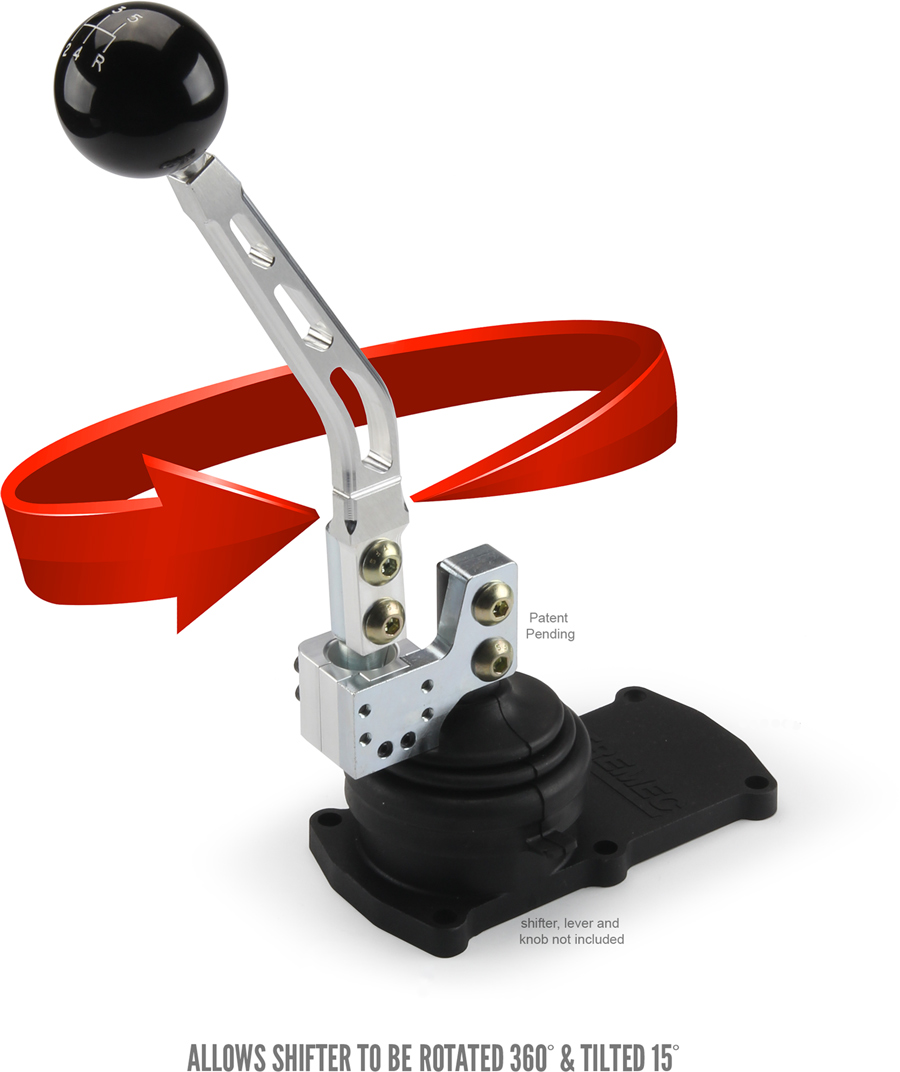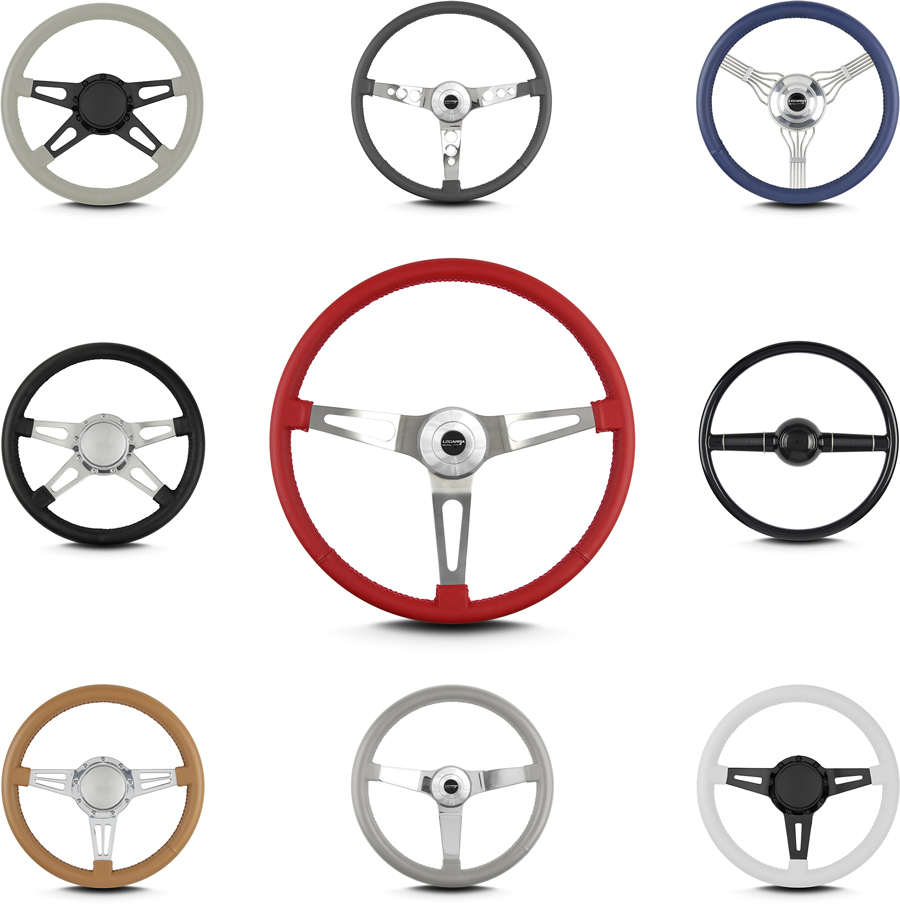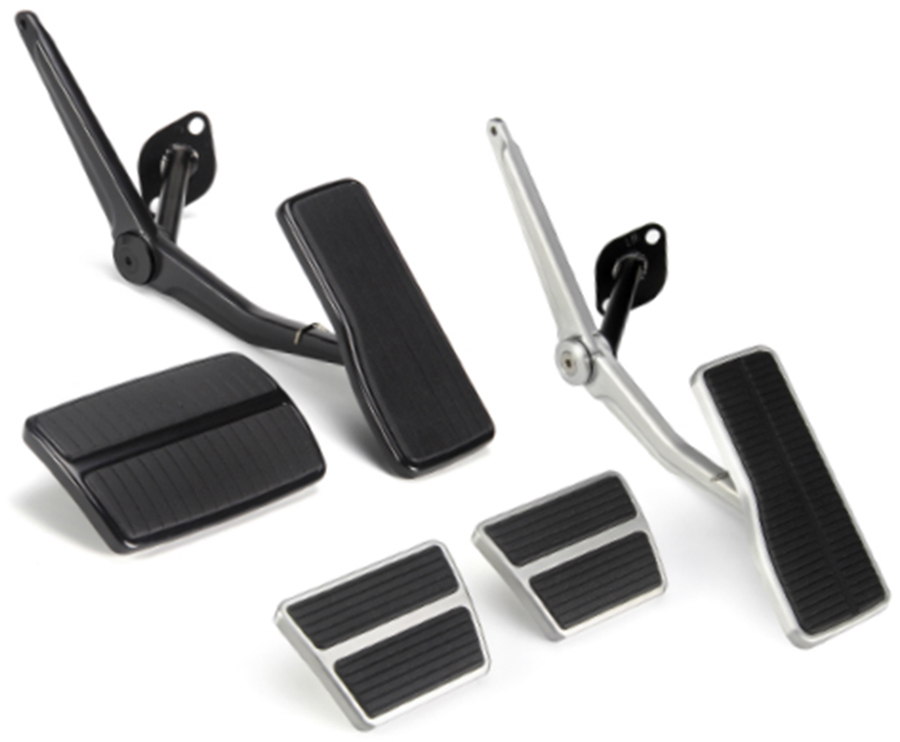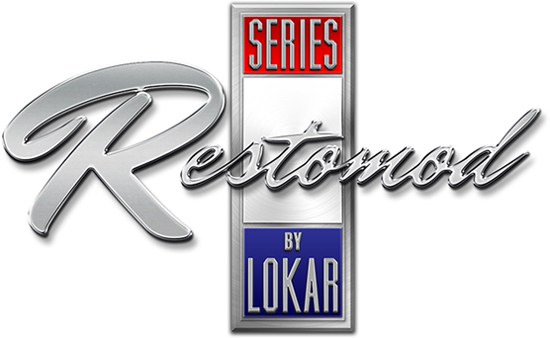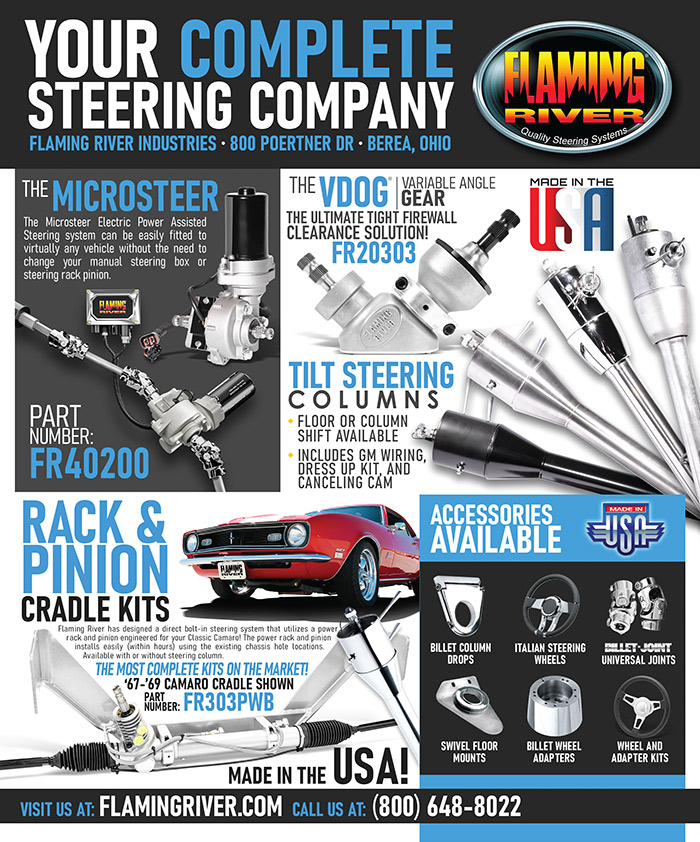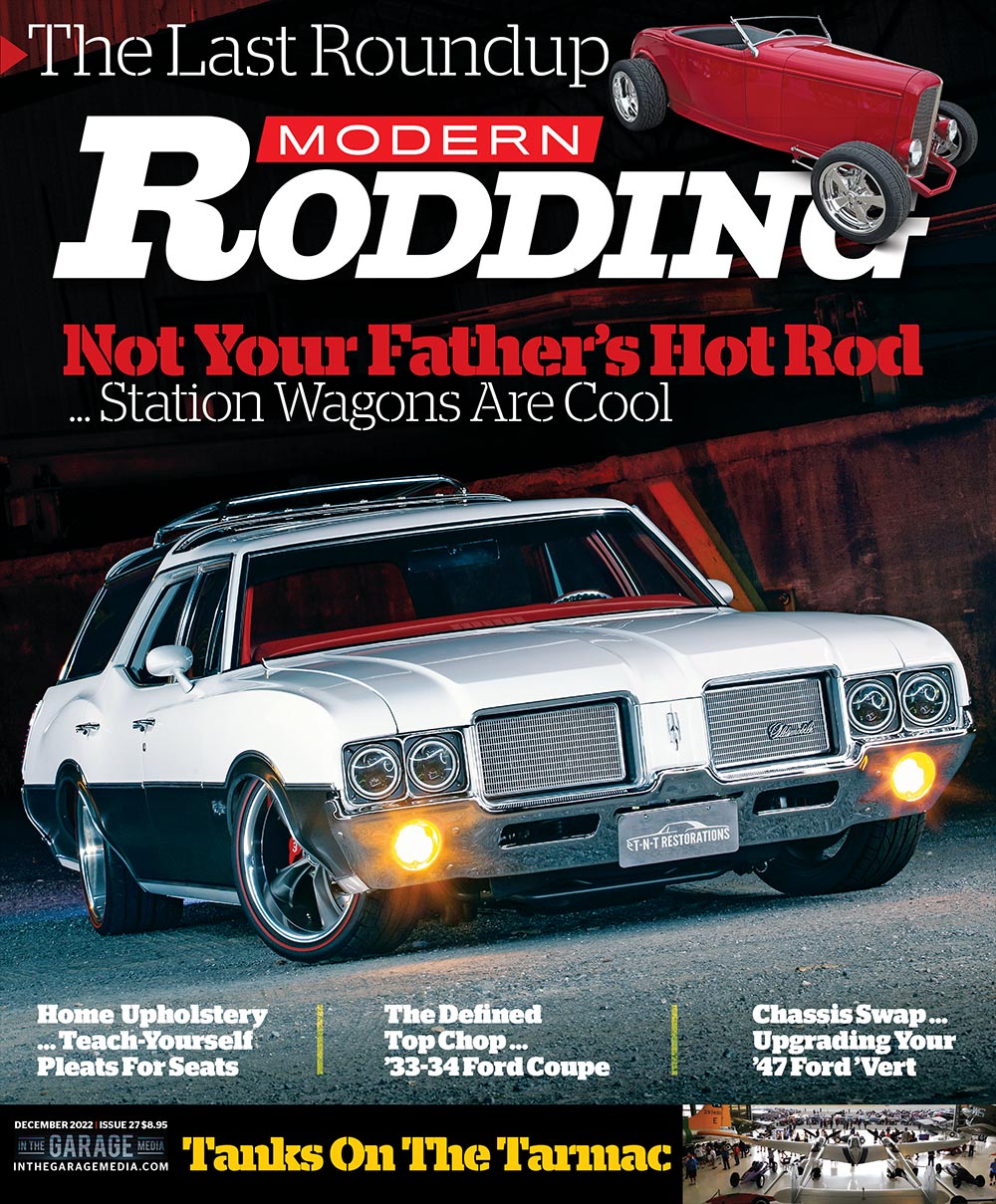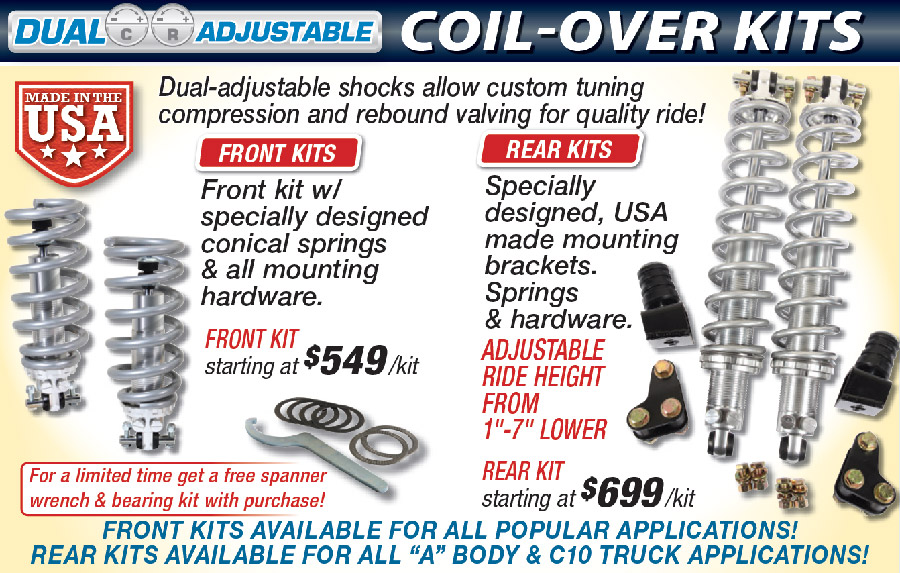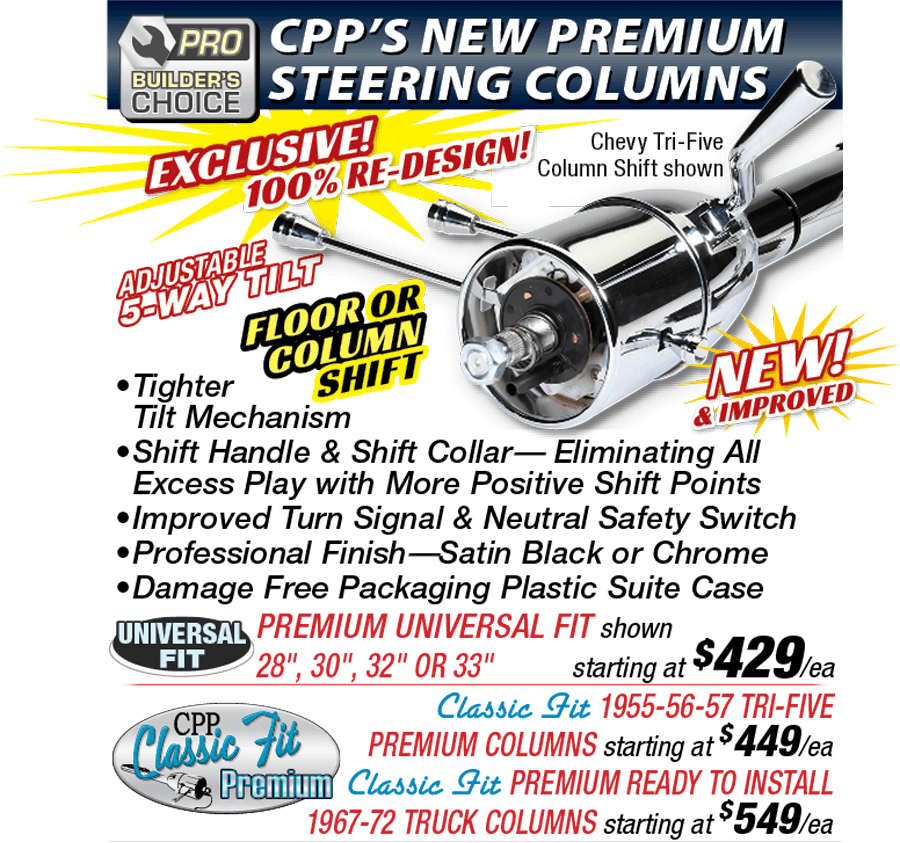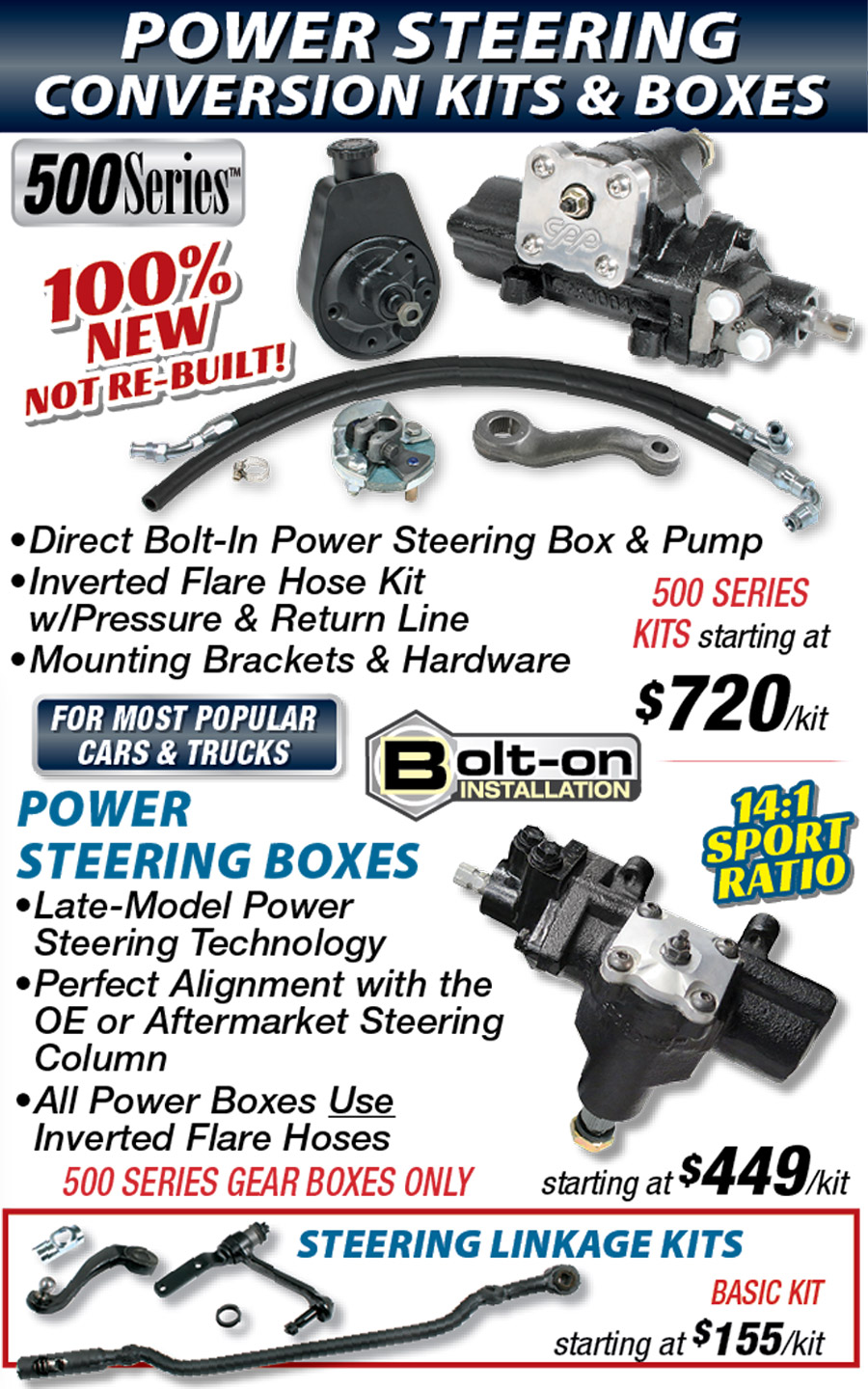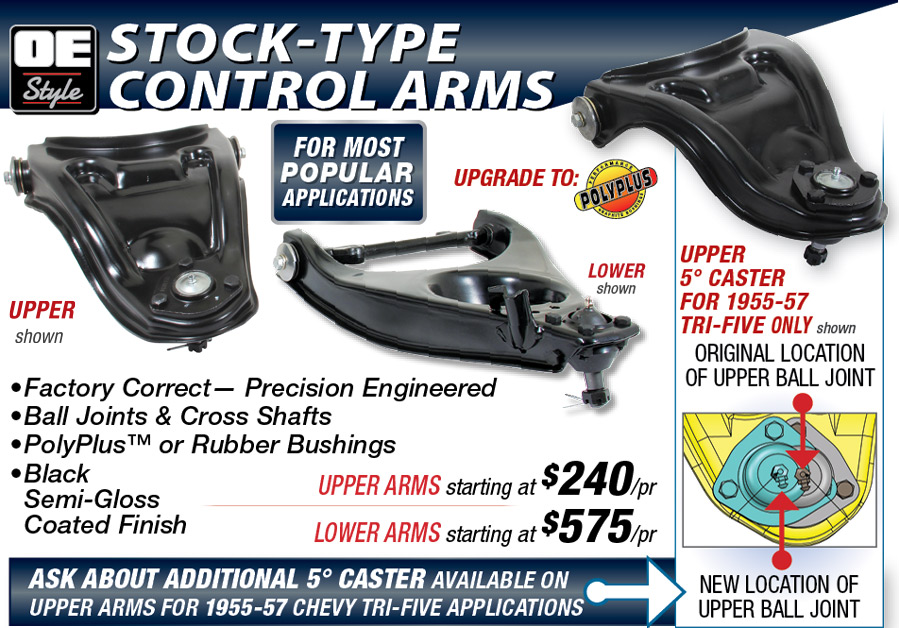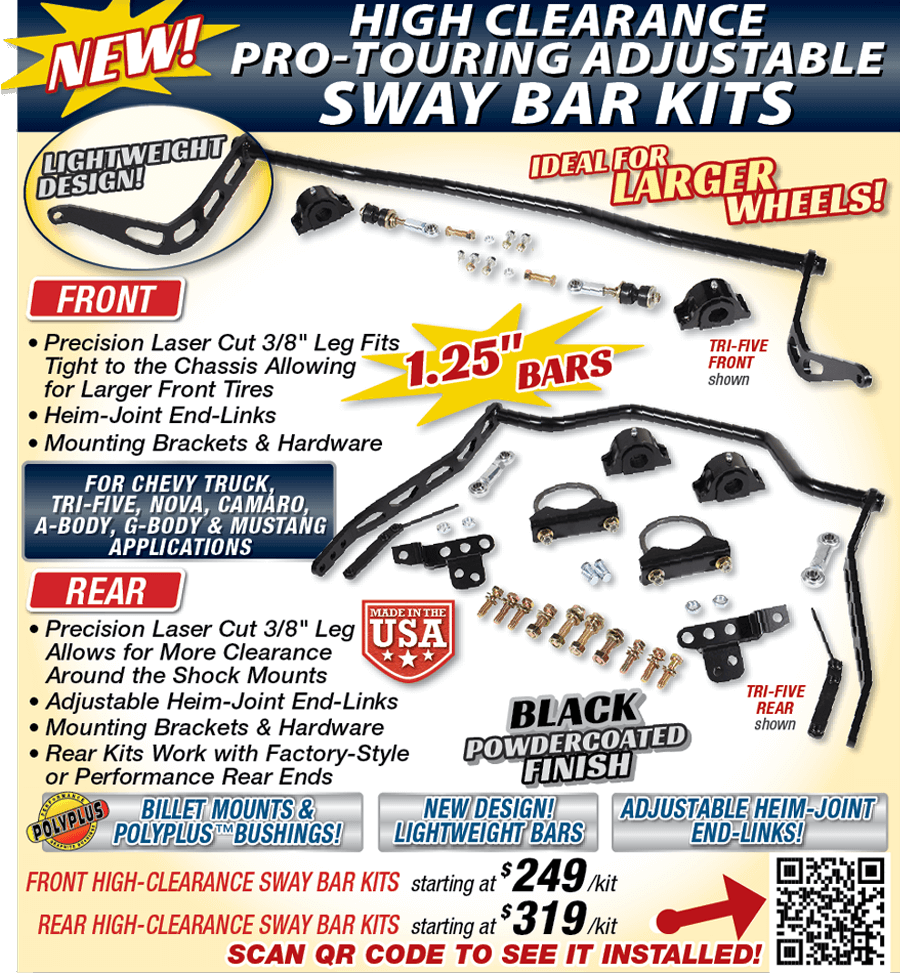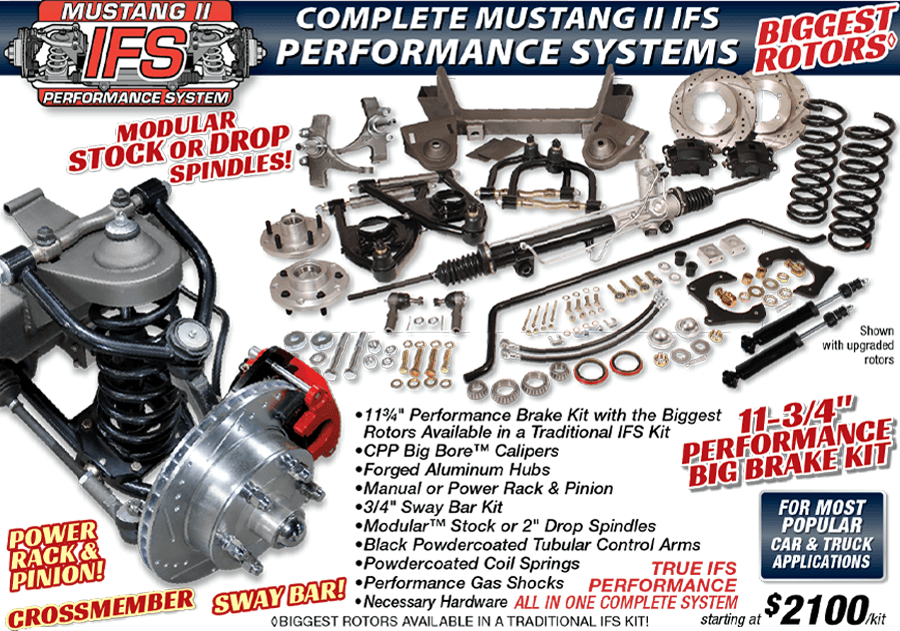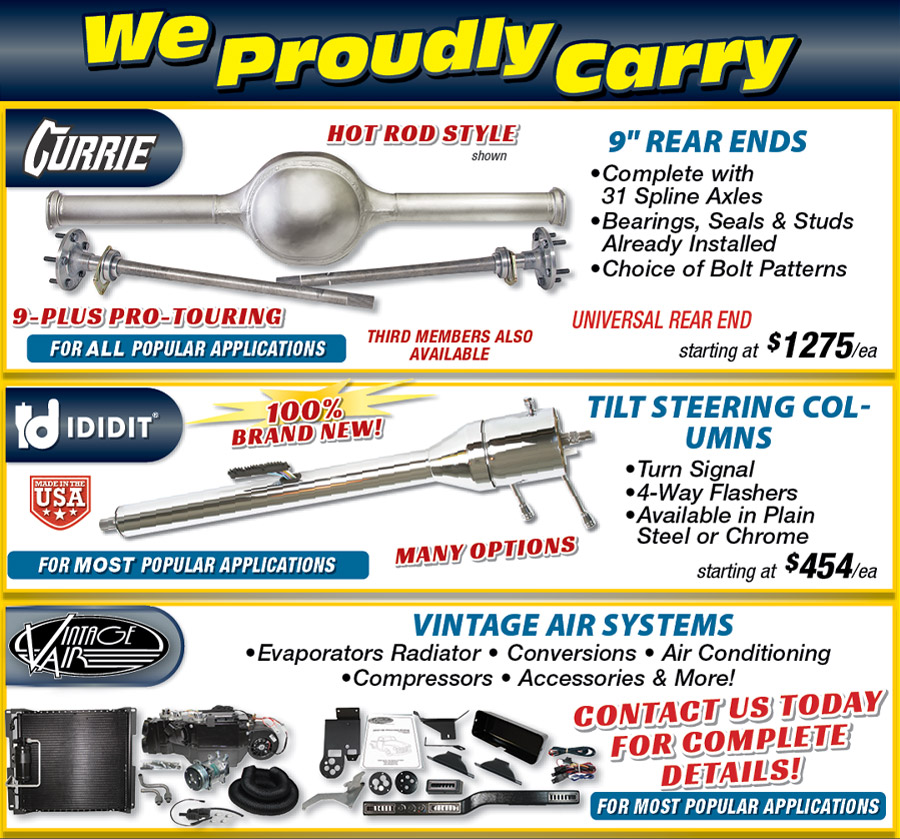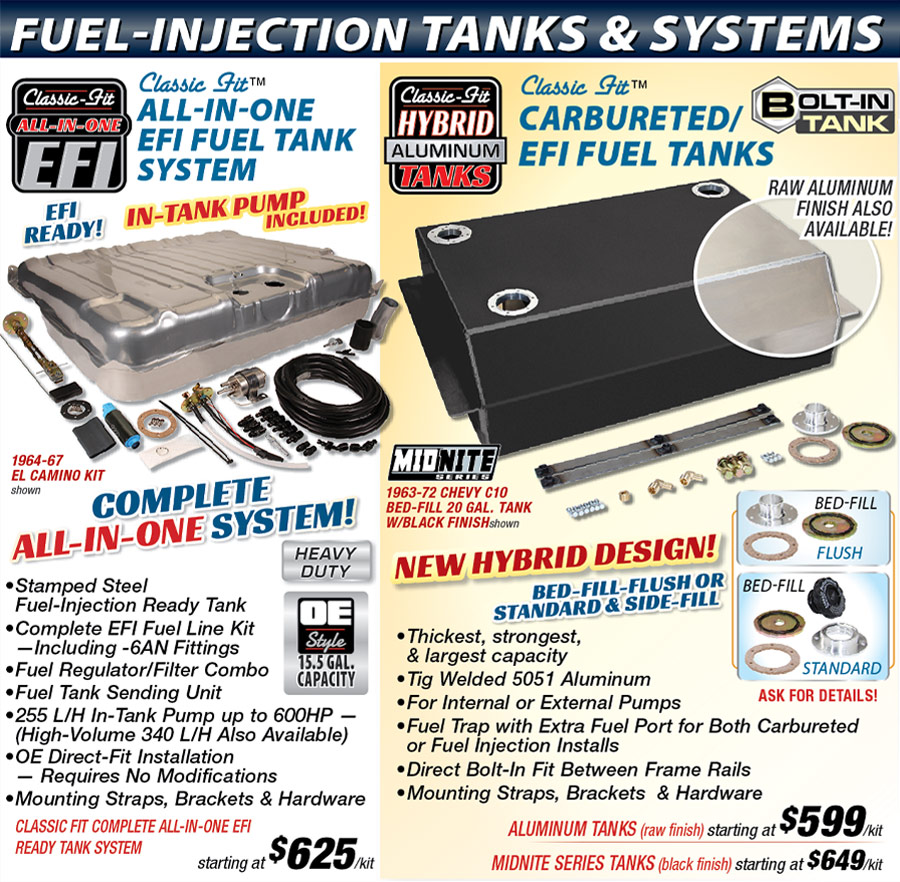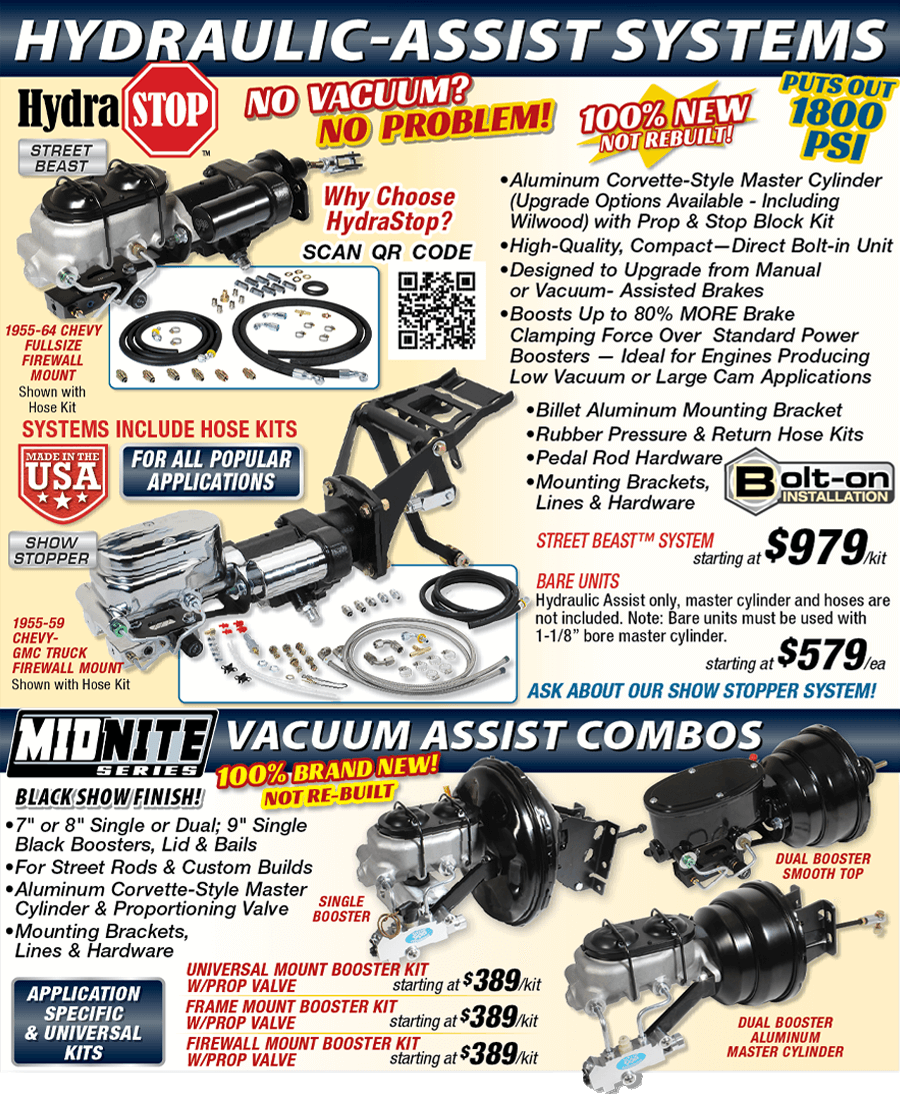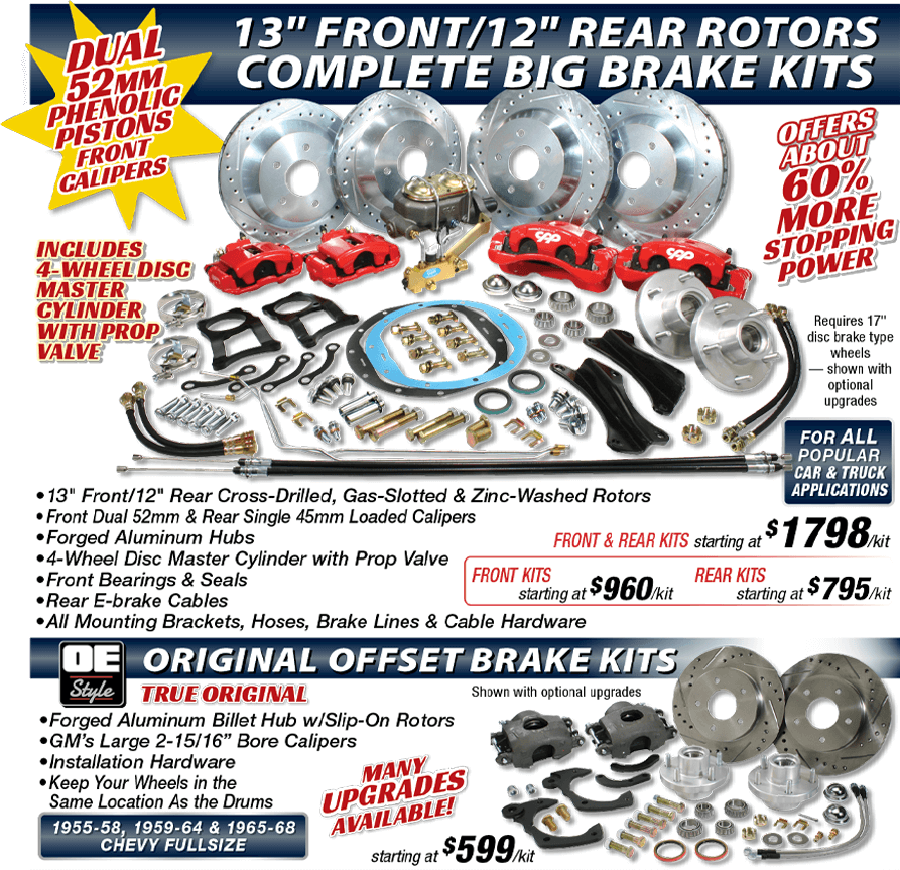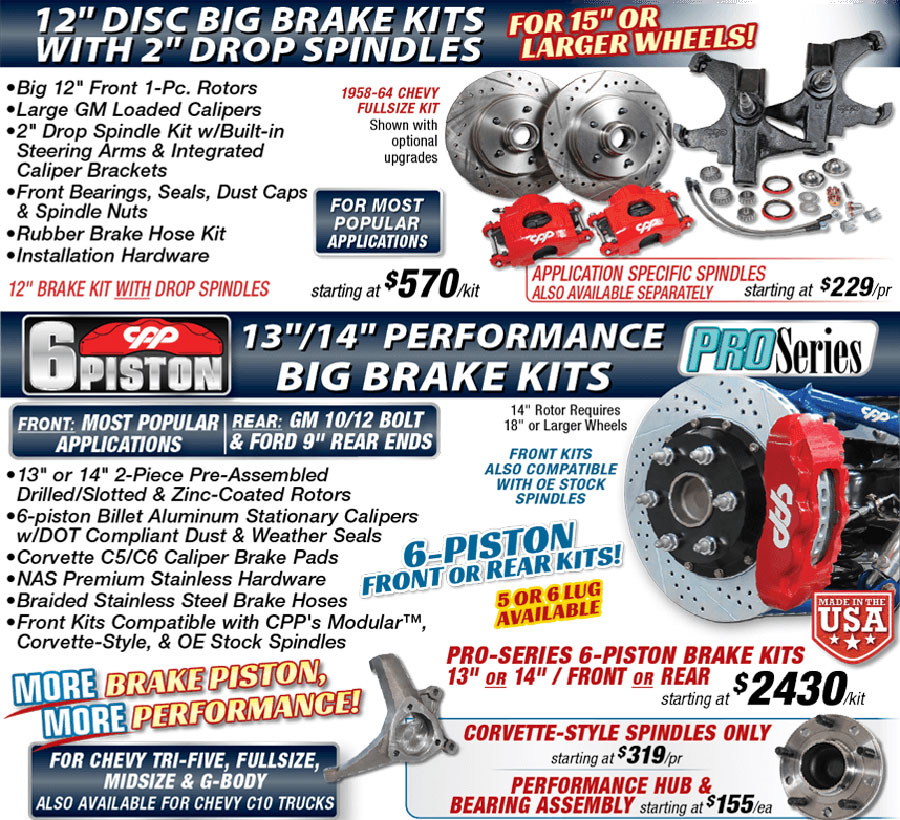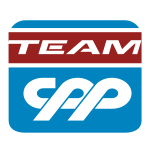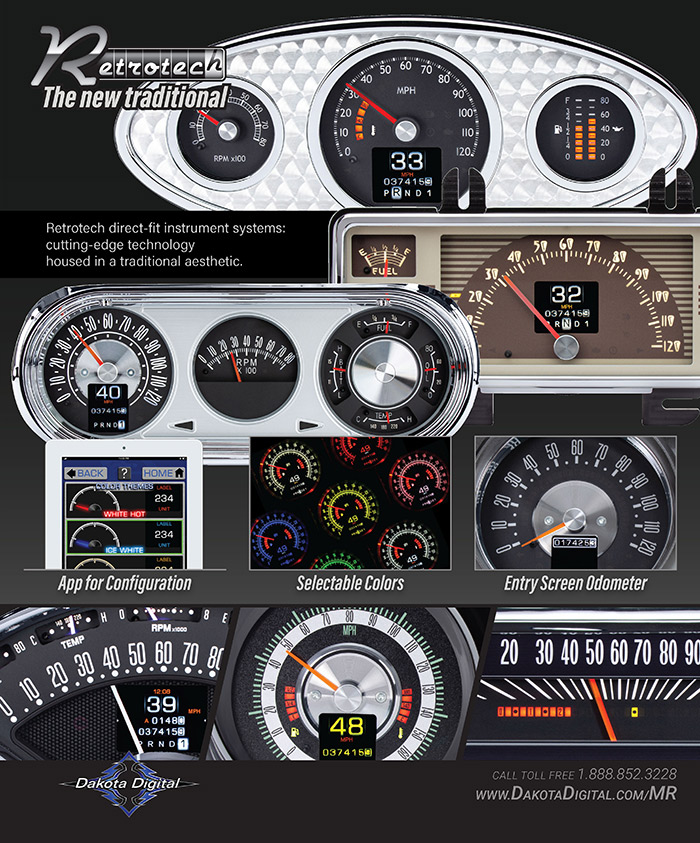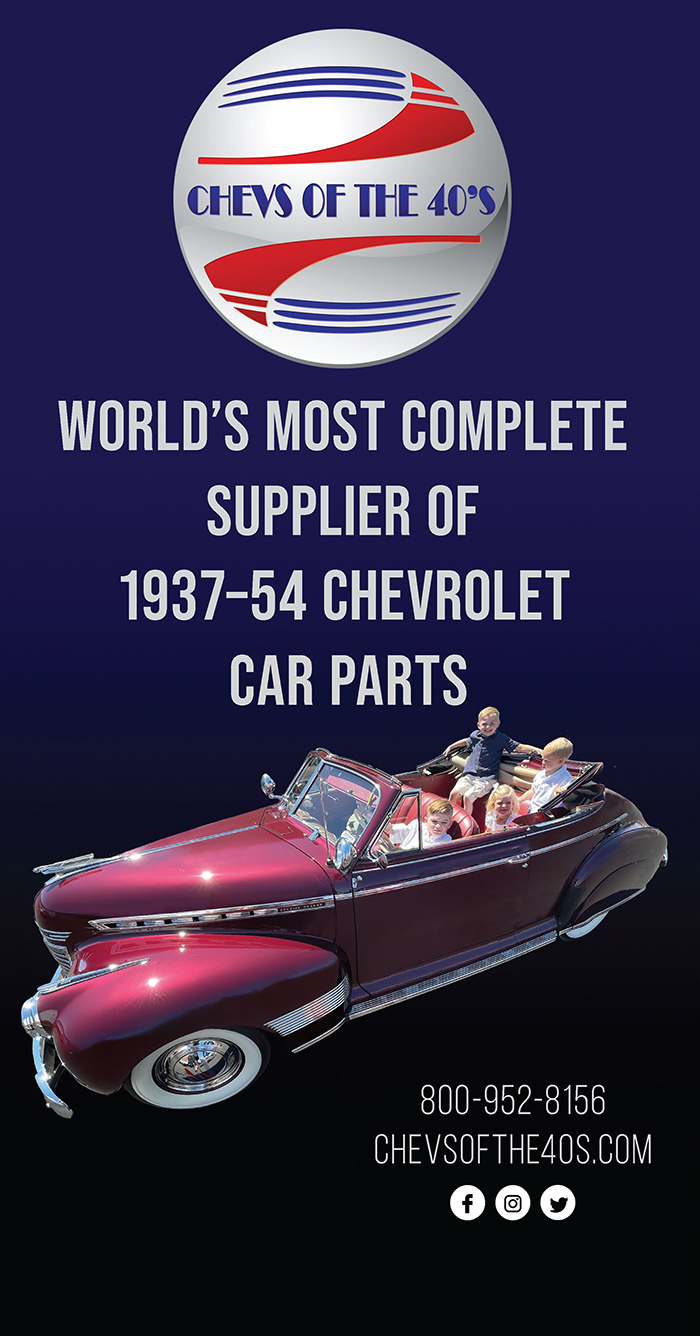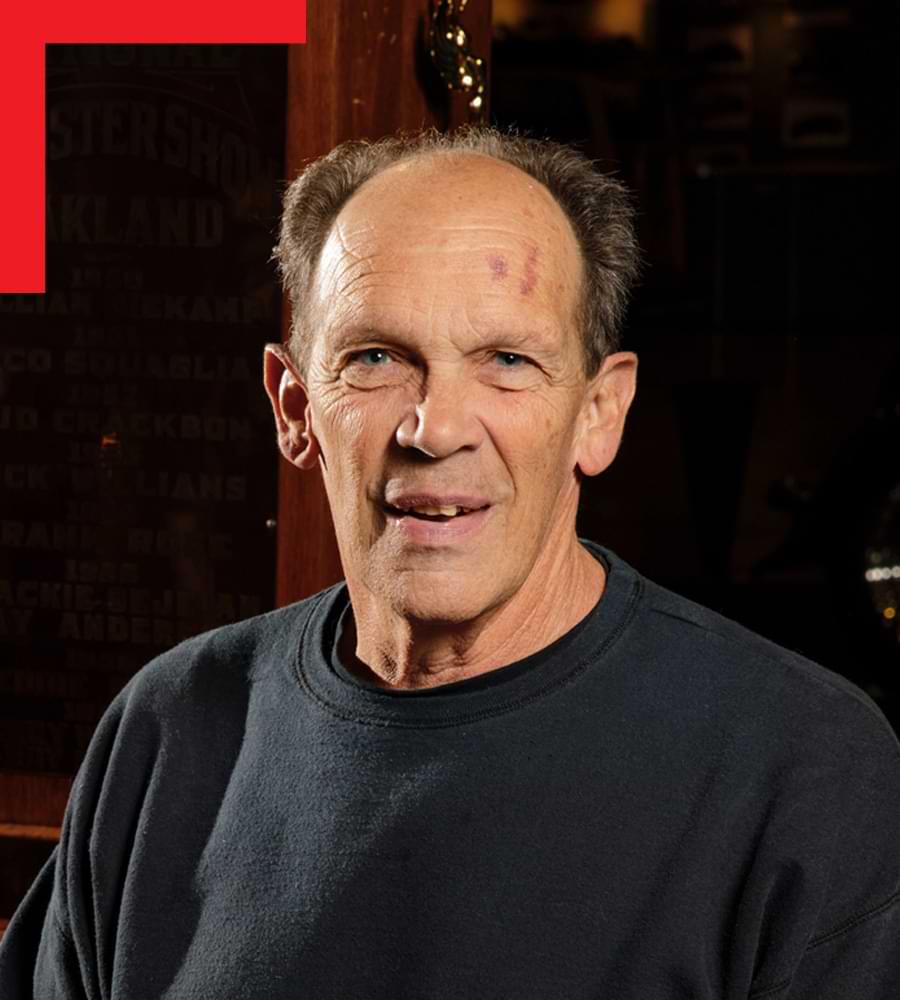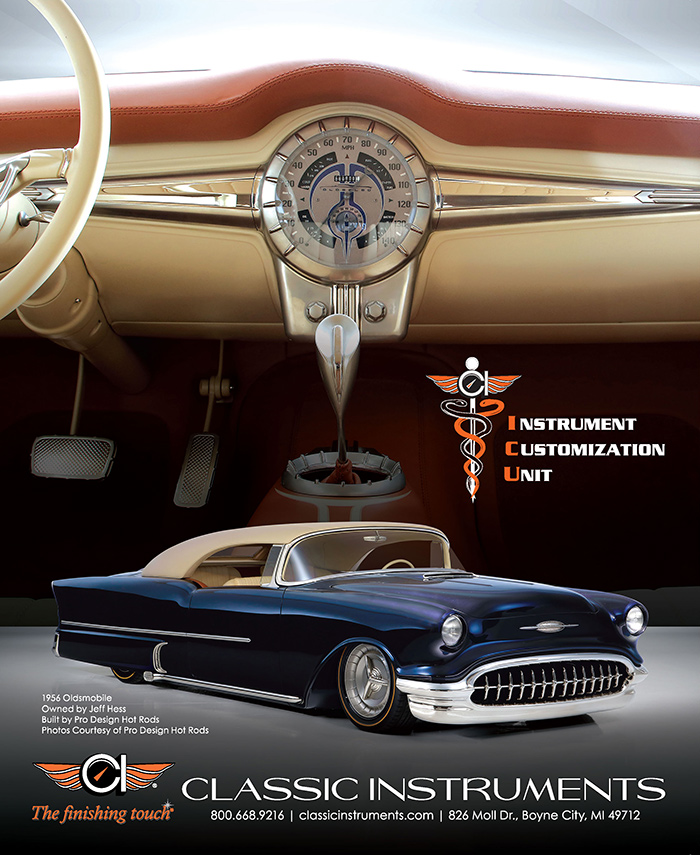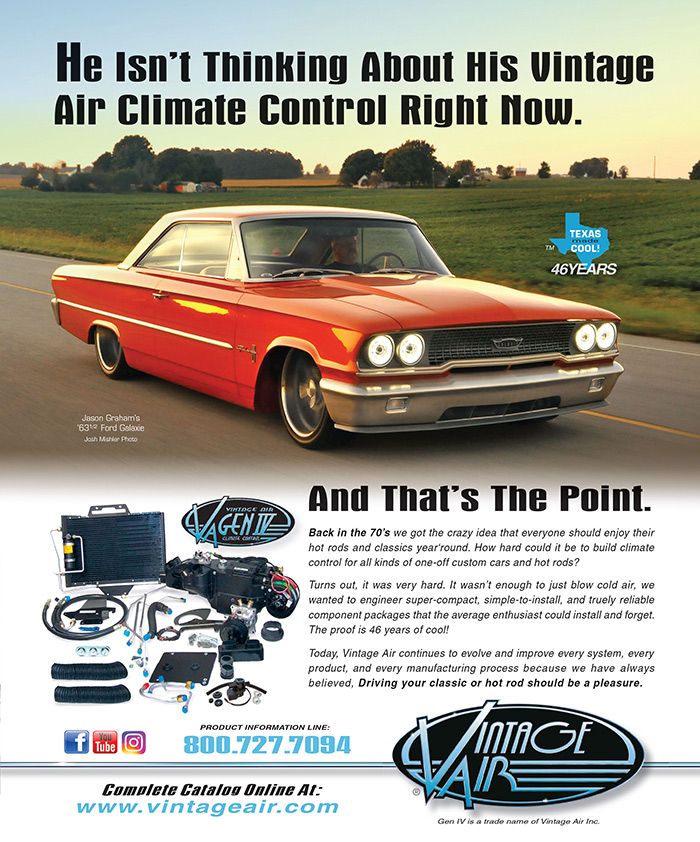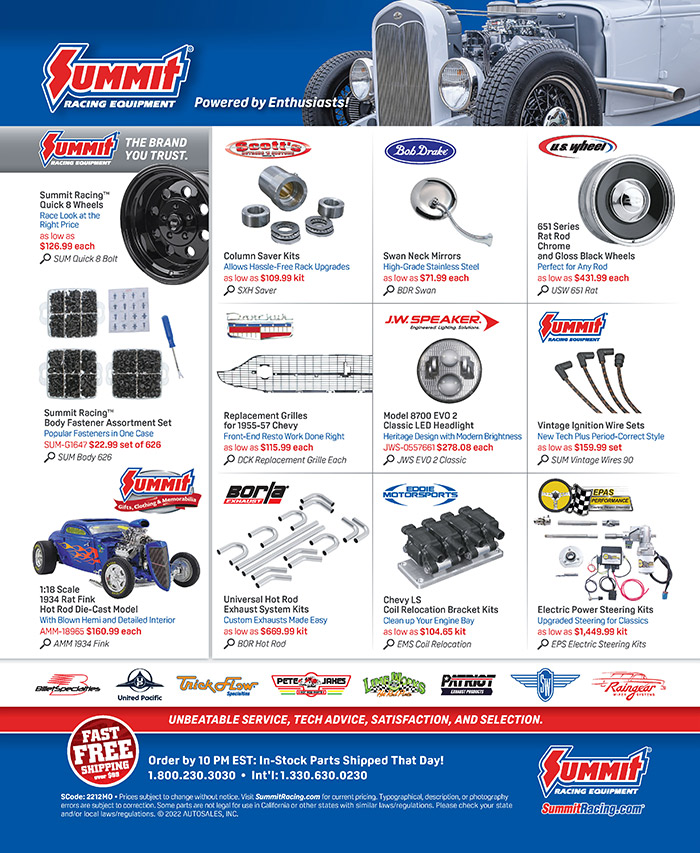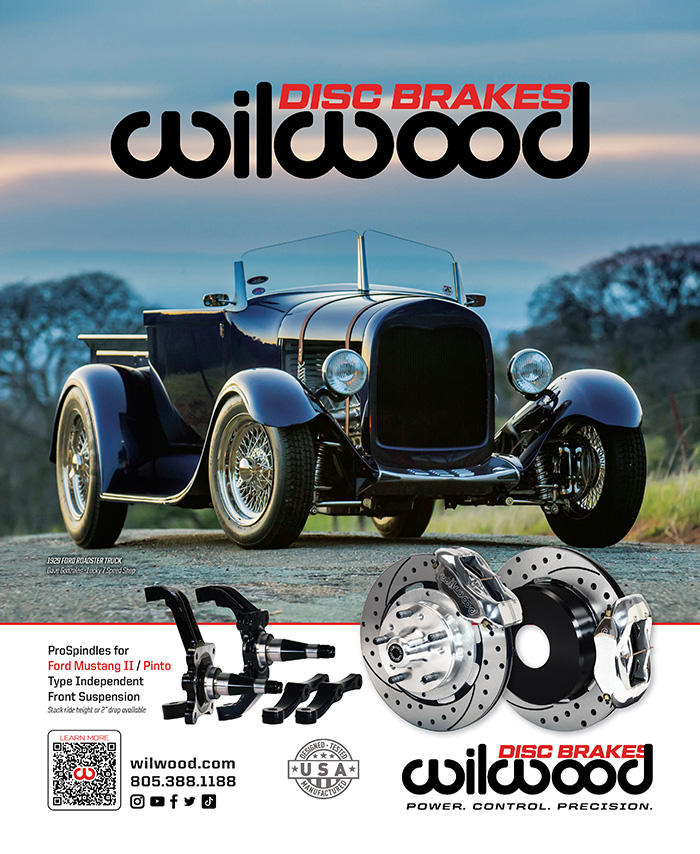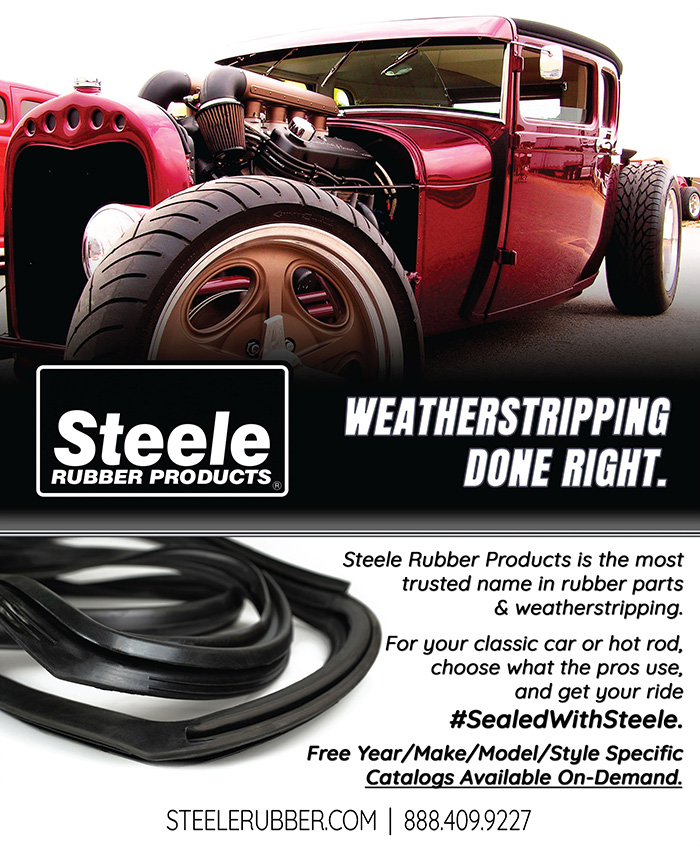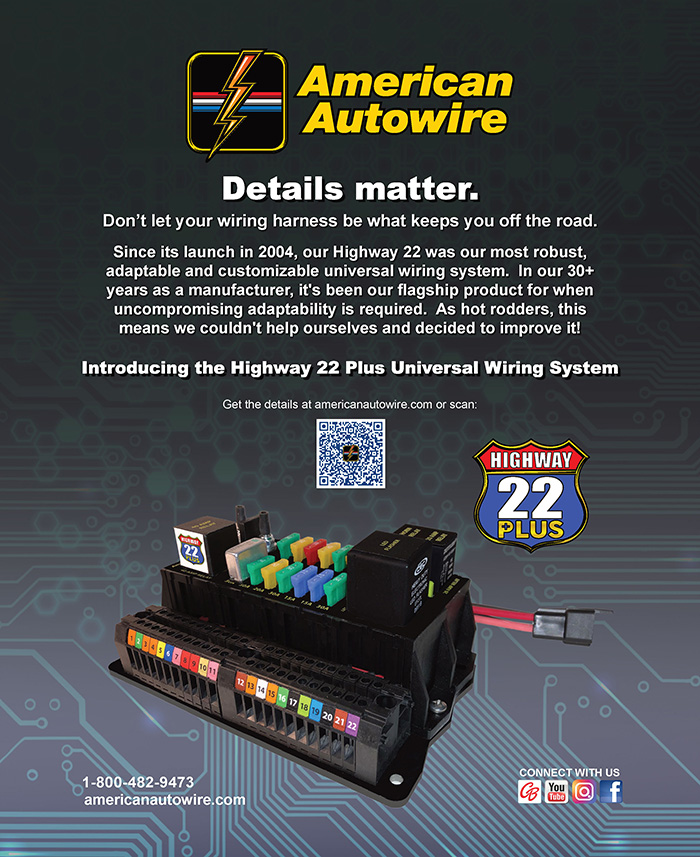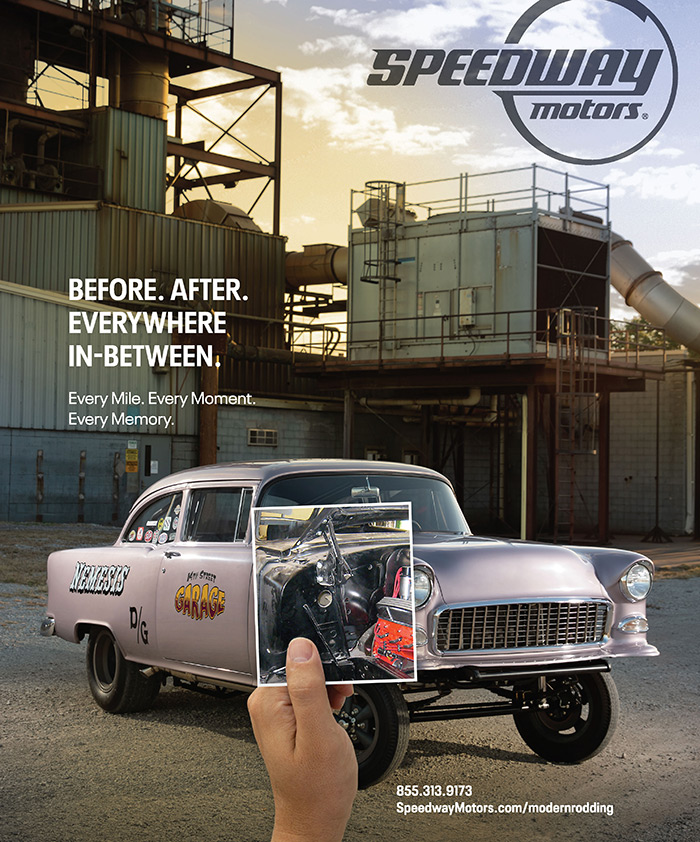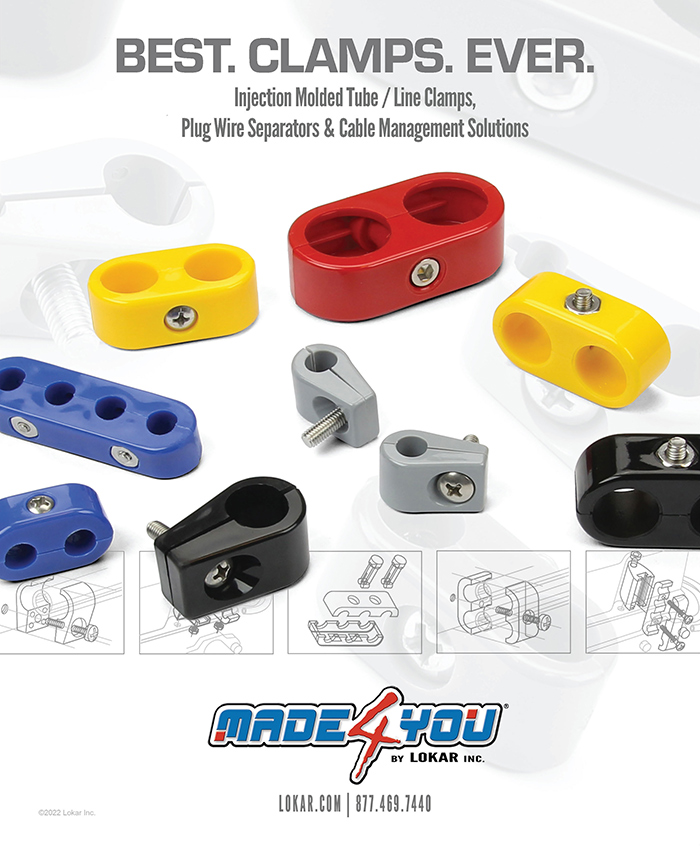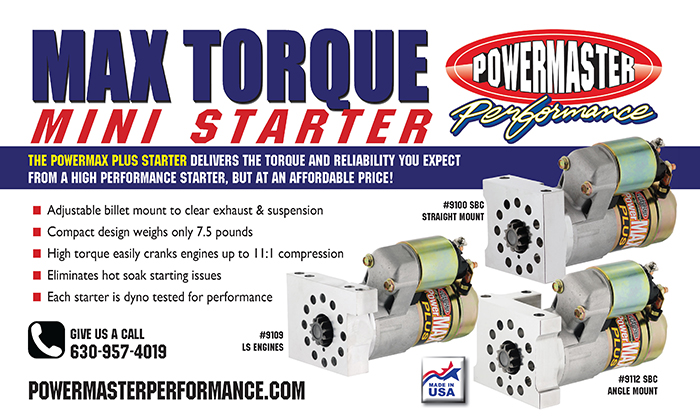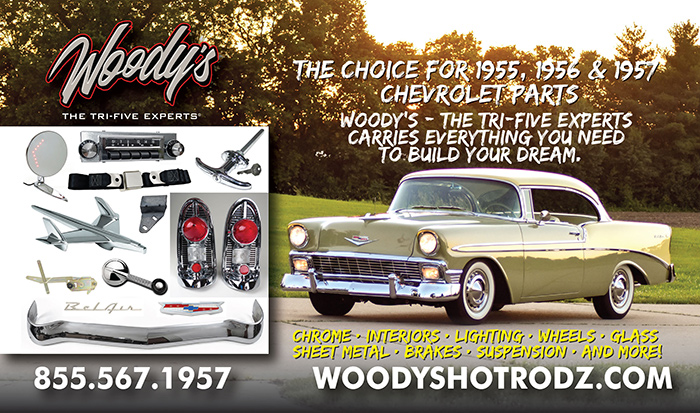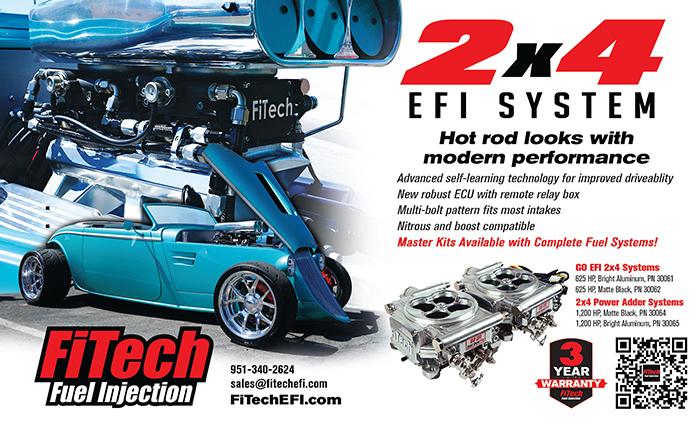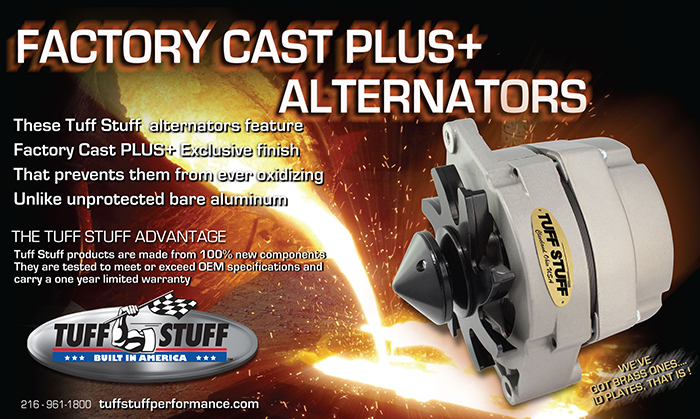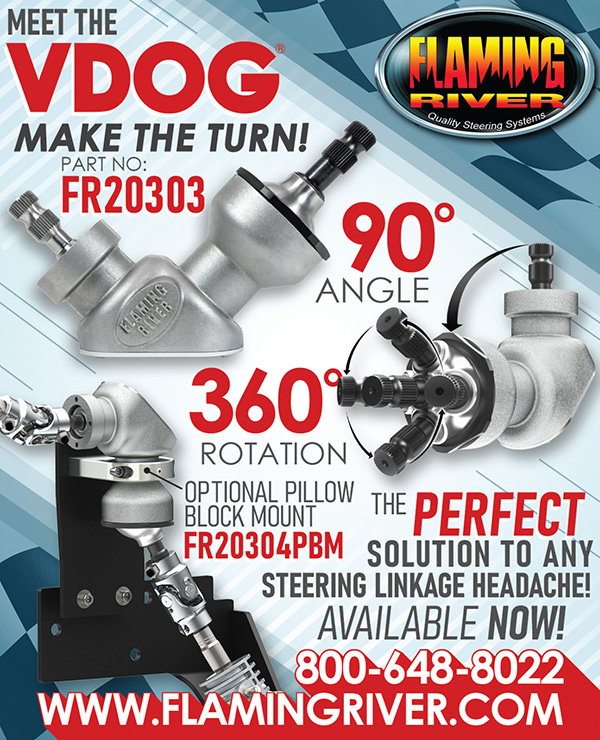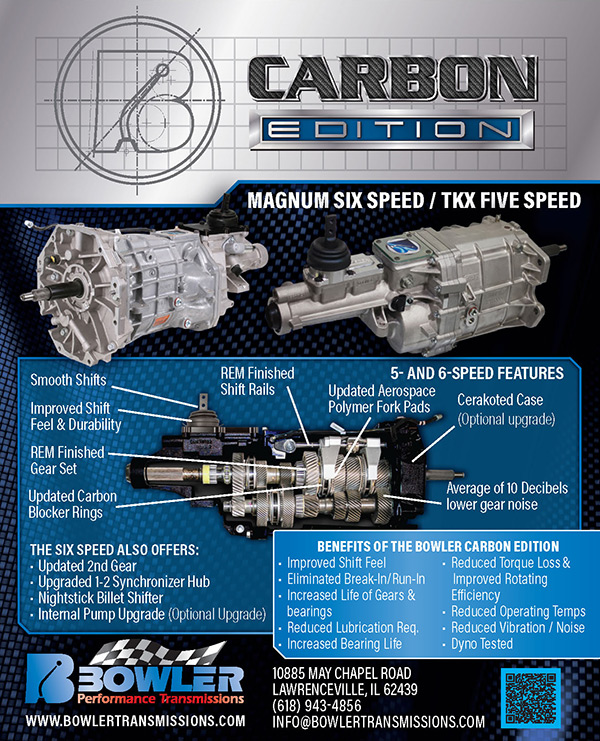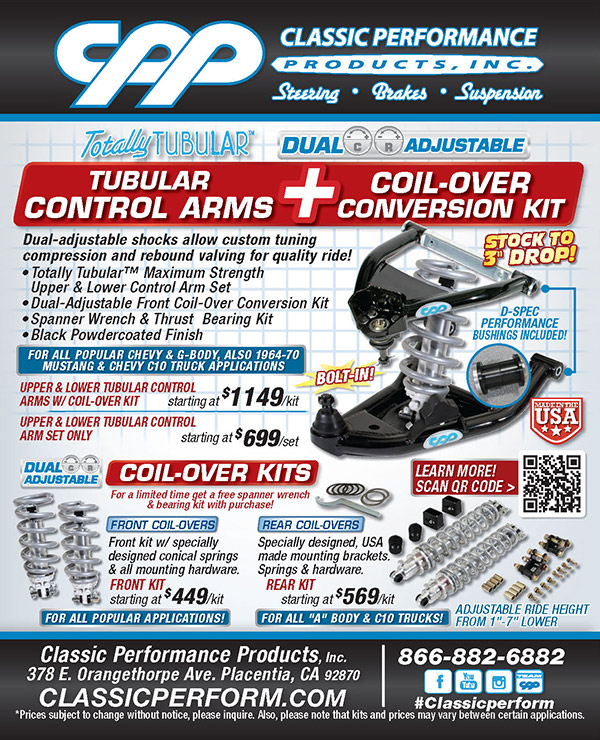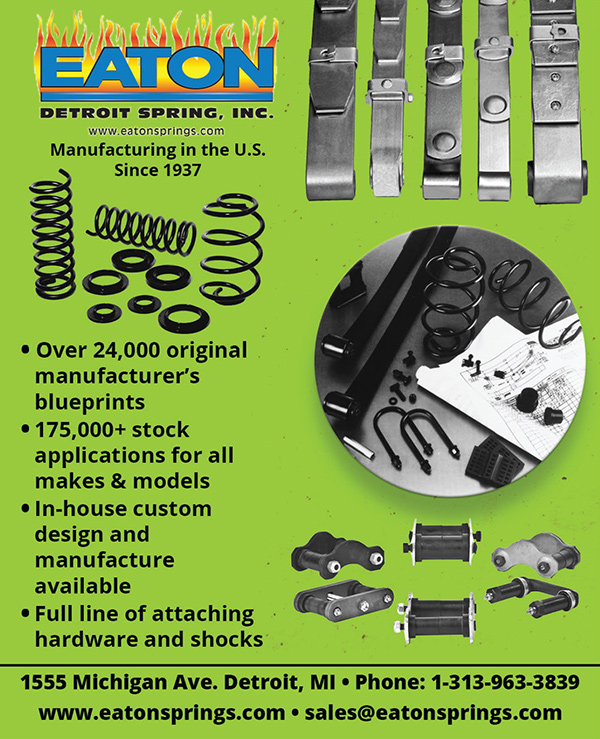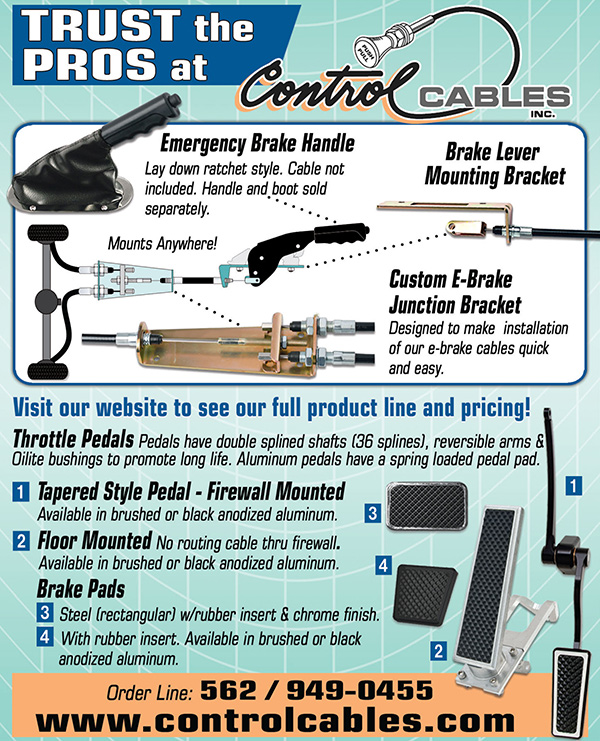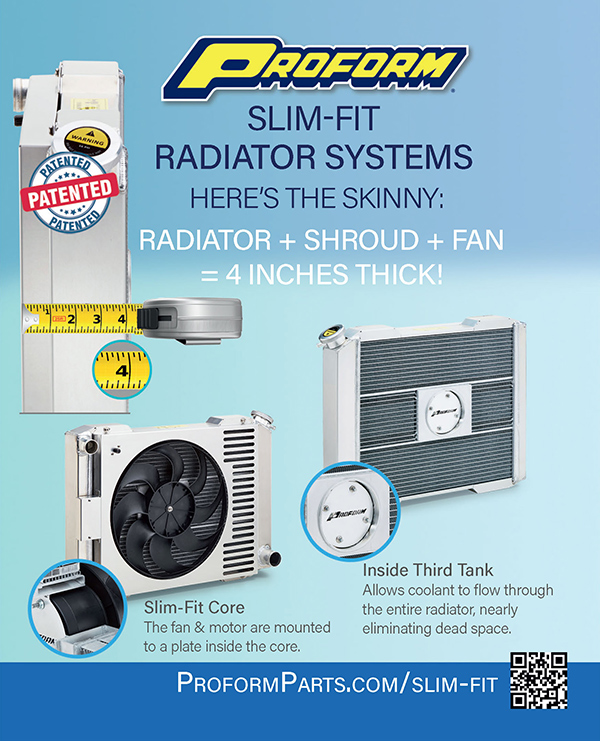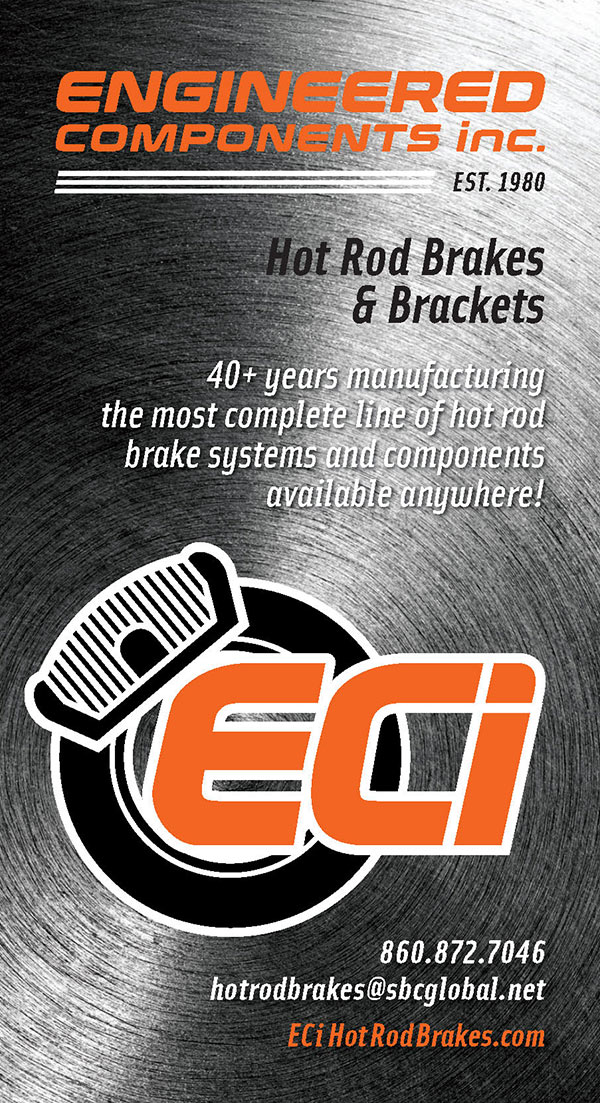
… Teach-Yourself
Pleats For Seats
Top Chop …
’33-34 Ford Coupe
Upgrading Your
’47 Ford ’Vert
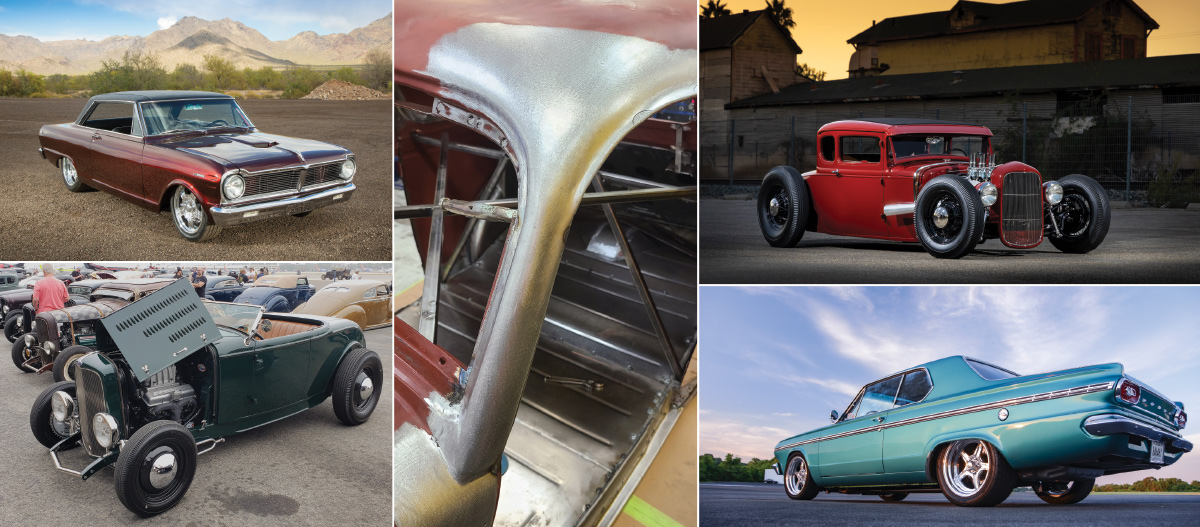
By John Machaqueiro, Photography by the Author
By Brian Brennan, Photography by Wes Allison
By Brian Brennan, Photography by Tim Sutton
By Fuelish Media
By Tommy Lee Byrd, Photography by the Author
By Eric Geisert, Photography by the Author
By Ron Ceridono, Photography by John Winter
By Chris Shelton, Photography by Brian Brennan
By Curt Iseli, Photography by Cody Walls
By Tommy Lee Byrd, Photography by Camren Beattie
Photo by John Machaqueiro
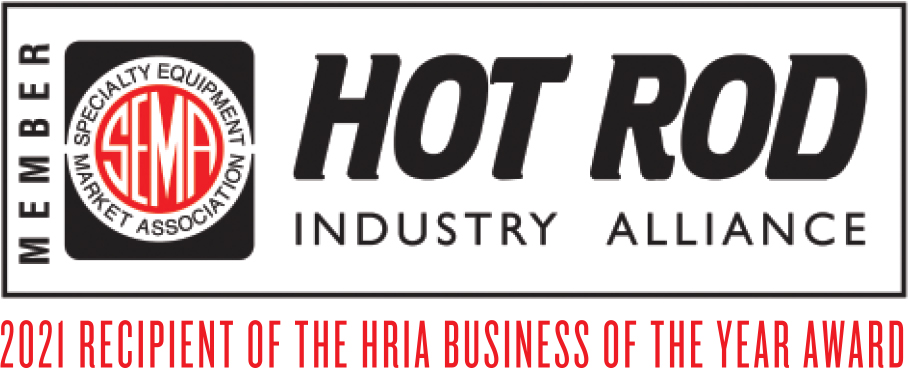
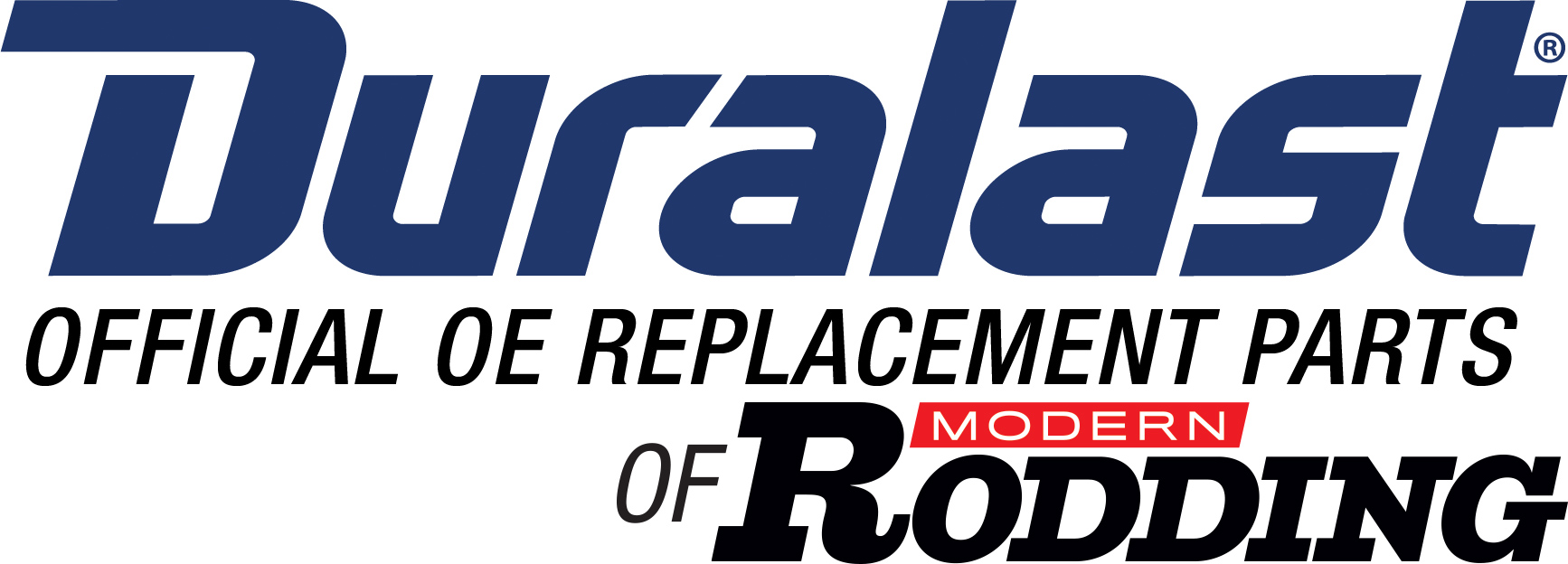
378 E. Orangethorpe Ave. Placentia, California 92870
#ClassicPerform

BRIAN BRENNAN
bbrennan@inthegaragemedia.com
TIM FOSS
tfoss@inthegaragemedia.com
YASMIN FAJATIN
yfajatin@inthegaragemedia.com
SARAH GONZALES
sgonzales@inthegaragemedia.com
ROB MUNOZ
rmunoz@inthegaragemedia.com
PATRICIA LUDI
pludi@inthegaragemedia.com
Wes Allison, Rodney Bauman, Gerry Burger, Tommy Lee Byrd, Ron Ceridono, Michael Christensen, Ron Covell, Grant Cox, John Drummond, Eric Geisert, John Gilbert, Joe Greeves, Ken Gross, John Jackson, Chadly Johnson, Barry Kluczyk, Scotty Lachenauer, Don Lindfors, Ryan Manson, Josh Mishler, Dale Moreau, Don Prieto, Todd Ryden, Jason Scudellari, Chris Shelton, Tim Sutton, Chuck Vranas, John Winter — Writers and Photographers
Travis Weeks Advertising Sales Manager
Mark Dewey National Sales Manager
Patrick Walsh Sales Representative
John Viscardo Sales Representative
ads@inthegaragemedia.com
ModernRodding.com
AllChevyPerformance.com
ClassicTruckPerformance.com
InTheGarageMedia.com
subscription@inthegaragemedia.com
(833) 985-9171
InTheGarageMedia.com “Online Store”
For bulk back issues of 10 copies or more, contact store@inthegaragemedia.com

Copyright (c) 2022 In The Garage Media.
Printed in the USA.
The Modern Rodding trademark is a registered trademark of In The Garage Media.
Modern Rodding STARTING OVER
 By Brian Brennan
By Brian Brennant really doesn’t matter (too much) what motor you have residing under the hood of your hot rod so long as it will take you down the road. I am reminded of a quote from Bonnie Hunt who played the character “Sally Carrera” from the movie Cars: “You can drive on a road to make good time, or you can drive on a road to have a good time.”
Truer words were never uttered. I’m confident that you and I have managed both. There are periods when time is of the essence and there are times, hopefully more of these, where it’s more about having a good time. Without a moment’s doubt in my mind some of the best times I have enjoyed are those stretches when I was driving my roadster across country. Those drives on interstate highways or down the backcountry roads were (are) some of my life’s best times. It’s always great to drive my roadster even on short jaunts but it’s the long drives that you truly remember.
Now, I should also point out that while all of us have our favorite powerplant the small-block Chevy has been around for a long time. I can remember some years back when I would hear “another small-block under the hood.” It was a derogative comment. And I get it, as you can only see so many of anything, but in my eyes each rodder is entitled to his own “joy,” and if that’s a small-block so be it. Somewhere in the late ’90s the LS began to “take over” as the powerplant V-8 of choice. For the next 20 years it built up a head of steam to the point it is the powerplant of choice. It’s amusing but while it hasn’t been replaced, we are seeing the LT gaining steam and, of course, the latest “small-block.” According to Chevrolet, the new Corvette Z06 will be a naturally 5.5L (335 cubes) flat-plane twin-cam V-8. Sounds exotic, and it is, and it will also be wind-up to 9,000 rpm. Think about that, a 9,000-rpm naturally aspirated V-8! I’m sure I will see one or two of these V-8s in a hot rod somewhere along the way this coming year but for now it looks like the LS is the “heartbeat” of choice.
InTheGarageMedia.com
 Goodguys is Texas Motor Speedway Bound
Goodguys is Texas Motor Speedway Bound
Goodguys Rod & Custom Association, the world’s largest hot rod association and producer of car shows, has moved its office headquarters from Pleasanton, California, to inside the 10-story Lone Star Tower overlooking Turn Two of Texas Motor Speedway in Fort Worth, Texas. The move marks the end of a two-decade-long residency in the Bay Area, during which the company experienced the most significant period of growth in its 39-year history.
Nicknamed “The Great American Speedway,” the facility in Fort Worth provides a more synergistic location for the expanding association, which began its event series in 1983 as a one-day get-together for Bay Area builders. While new tenants to the speedway, 2022 is the 25th year Goodguys has hosted a show at the venue. The Goodguys event series has since expanded to host 15-22 multiday events nationwide, attracting approximately 50,000 show cars and 500,000 spectators annually. The events have also evolved to feature an incredibly diverse range of vehicles and motorsports-oriented activities, including exhibitions, cruises, and a full autocross series. They are also family friendly, with food, entertainment, and activities for all ages.
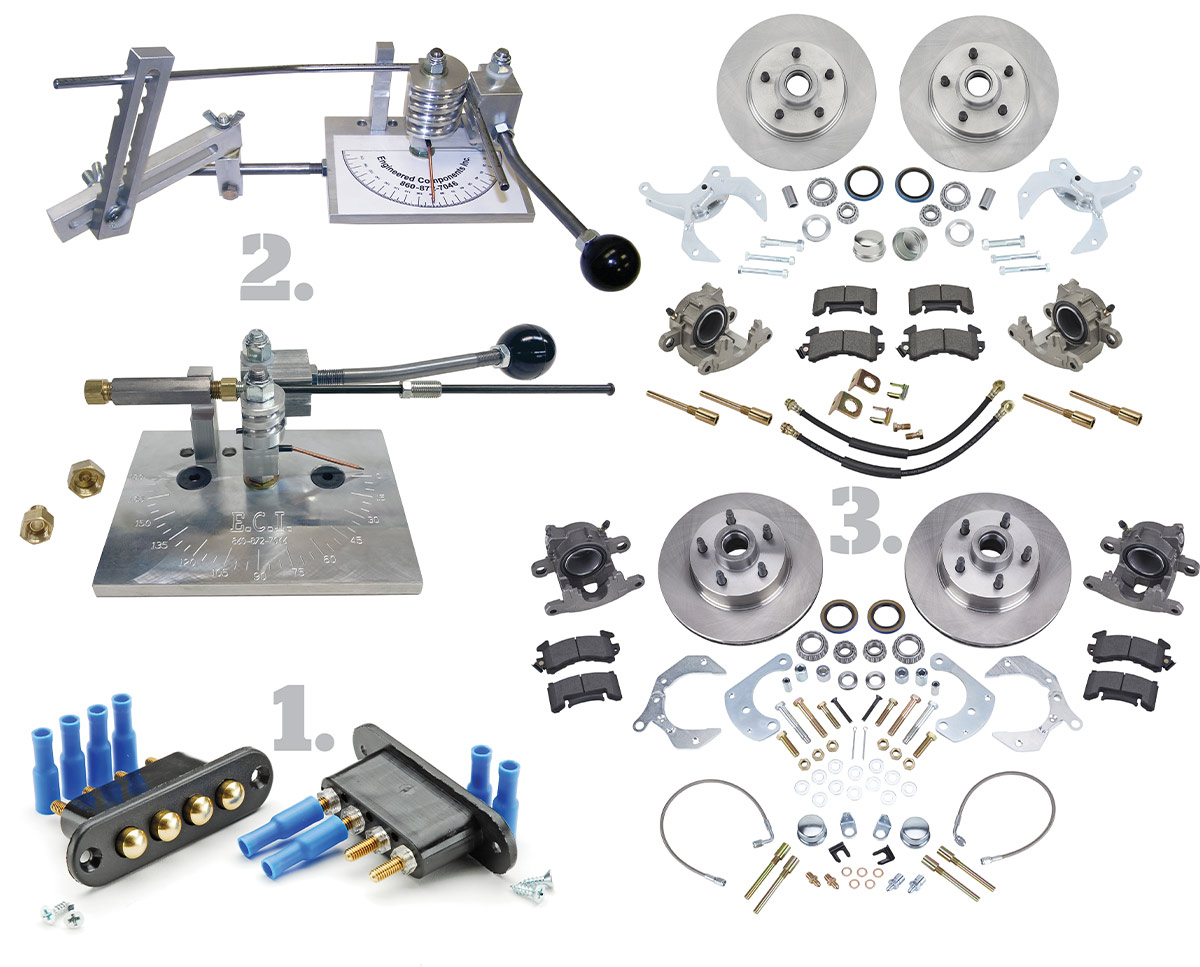
 By Brian Brennan
By Brian Brennan
1. W.I.D.E. Contact Band Joins Dakota Digital Team
Dakota Digital has been a distributor of W.I.D.E. door contacts since its inception in 1995 using the trade name Magnum Shooters, but has since purchased the product line completely.
The W.I.D.E. Contact models are offered in a range of a number of contacts, both with and without pin switches for dome light activation. Dakota Digital was built around the idea of adding modern and convenient features to a custom vehicle.
 Photography by The Author
Photography by The Author
 Photography by The Author
Photography by The Authorefore the SUV and the minivan there was the station wagon. One can arguably state that when it comes to the station wagon America has done it bigger and better than anyone else. Originally conceived as a doorless people and cargo mover on a truck platform in the early 1900s, by the middle of the 1920s Ford had added some civility to it with the introduction of the Woodie. That refinement continued after World War II as wooden bodies gave way to steel panels and a foundation based on passenger car chassis. By virtue of their passenger car underpinnings, by the mid ’60s many of these wagons shared the front clips with the muscle car offerings of that era. If you’re into muscle cars and have a soft spot for station wagons then you’re in the same ballpark as Pennsylvanian Tom Thomas. As a fan of GM’s A-body offerings, that specific interest initially blossomed with a ’66 Chevelle convertible that he built during his high school years.
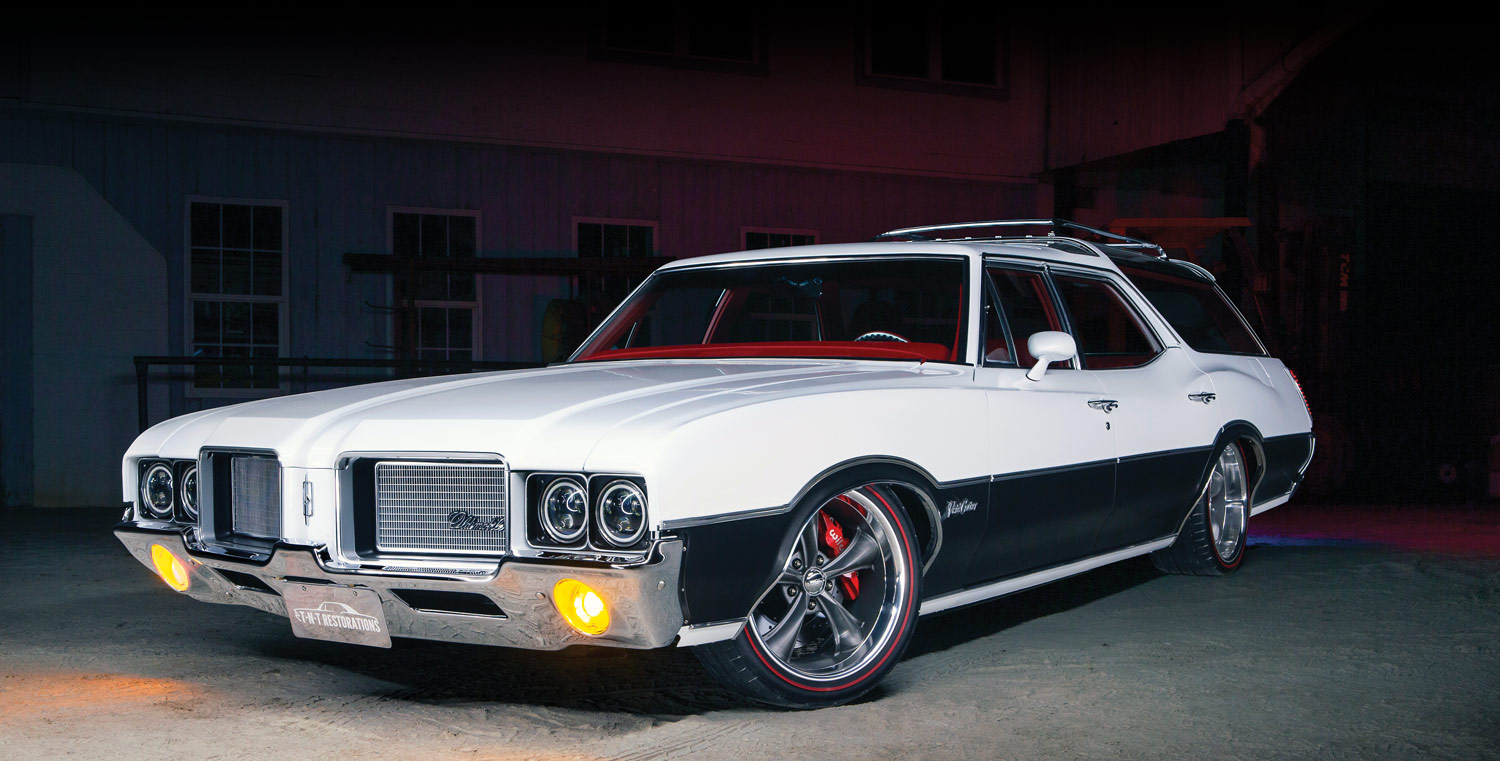
InTheGarageMedia.com

 Photography by the Author
Photography by the Author  Videography By Tommy Lee Byrd
Videography By Tommy Lee Byrdt’s been 40 years that the Shades of the Past Car Club has presented the Hot Rod Roundup. This year was its 39th (lost a year due to COVID-19) and the last one. It was one of the premier events in the South—many would say the country. While the Hot Rod Roundup was hosted this year and for the past dozen years at Dollywood’s Splash Country in Pigeon Forge, Tennessee, this “roundup” has seen various locations as its home, always growing and always getting better.
The needs of Dollywood for expansion and the needs of the club having changed led to a match of “needs” and the Shades of the Past Car Club has opted to bring to a close a well-documented and experienced chapter of American hot rodding. Known for its many unique features, such as a yearly giveaway hot rod, the 50/50 drawing that oftentimes led to the winner taking home $20,000-plus, one of the pre-registered entrants having their name pulled from the drum and being gifted another $10,000, and countless charities that have benefited over the years. Of course, all of this is great but the attending rodders have always been privileged to enjoy an event that recognizes numerous categories of winners with awards for each to take home. While the name of the event is the Hot Rod Roundup it is repeatedly called by its nickname–“Shades.”
Shades had come to be recognized for its Top 25. To be recognized as one of the 25 meant you had to build an outstanding hot rod. Repeatedly, as I would travel the country, I would speak with rodders who would tell me about this or that hot rod and how cool it is. Somewhere in the conversation the storyteller would bring up it was a past Top 25 winner and that’s all that would need to be said. Everyone knew you meant that it had earned a Top 25 from the Hot Rod Roundup presented by Shades of the Past Car Club. It’s always been recognized that should you reap a Top 25 you truly had a hot rod that was worthy and could “stand tall” anywhere in the country at any competition.
Modern Rodding TECH
InTheGarageMedia.com
 Photography by John Winter
Photography by John Winterack in the Oct. ’22 issue of Modern Rodding we introduced John Winter. As we explained then, Winter was looking for a means of upholstering his ’32 Ford coupe that wouldn’t demolish his building budget. Not being afraid of a challenge, Winter bought an appropriate sewing machine, a good pair of shears, a few yards of material, and stitched the coupe’s interior himself. Since then, he has upholstered his ’36 Ford Tudor sedan and a variety of other vehicles for friends.
While talking to Winter he offered a few tips and tricks he’s picked up when it comes to seats in a hot rod. The first example we’ll show here is making a seat from scratch with blocks of polyurethane foam. Winter begins by making a pattern of how the cushions should be shaped. The foam rubber is then cut out on a bandsaw and then the individual blocks are glued together to make a cushion. Foam comes in a variety of densities, so the cushions may be soft or surprisingly hard—it’s not unusual to make the seat bottoms and the backrests out of different densities to suit individual preferences.
Another option is to make the seat cushions out of one large sheet of foam. In some cases, an extra “band” of foam is wrapped around the front and sides of the cushion to help the edges keep their shape. This extra material may be made from the same material as the seat cushion density or foam that is slightly “harder” to act as leg and side support bolsters.

 Photography by Wes Allison
Photography by Wes Allisonhe “backstory” on just about every hot rod is where the real story lies. Frankie Klepadlo of SoCal is no different, as the real story on his ’30 Ford five-window coupe began years ago. Frankie’s ’30 Ford chopped-and-channeled coupe has finally made the road after six years of painstaking effort. But the backstory tells us it began a long time before that. It’s best to hear this story from Frankie himself.
“This is the story of my ’30 Ford chopped-and-channeled five-window coupe. The car is named ‘The Six Year Coupe’ for the obvious reason that it took six years to complete the build. But this Model A really started back in 1993. I was 5 years old and an avid car collector—Hot Wheels car collector, that is. My dad would take me to local car shows in Southern California. We would walk around and talk about the cars that we would build one day. For my dad most of the time it was an all-black ’55 Chevy or a ’32 Ford coupe. But for me it was always the Model A. It’s crazy to think that almost 30 years later I actually built the car we once dreamed about.
“In early December 2015 I had just sold my ’27 Ford roadster and decided I wanted to build my next car from the ground up. I started looking for an original steel body and came across the perfect start on an eBay listing. The seller ended up being a really cool guy and we worked out a deal face to face. My build officially began on December 22, 2015. At that time, I was convinced I would be driving the car by the following summer. I only missed the mark by five years.”
1. Nick Sinioris at Hot Rods by Dean carefully planned out his work and then worked his plan–how’s that for a novel approach!

 Photography by Brian Brennan
Photography by Brian Brennanhe world really doesn’t need yet another top chop story—or so I thought. Then ol’ Editor Brian Brennan visited Dean Livermore at Hot Rods by Dean and brought home these photos on the chopping of a ’33 Ford DeLuxe coupe.
It wasn’t the chop itself that caught my attention—it’s a moderate cut (2-1/2 inches) on a somewhat common car. Rather, it was the way Nick Sinioris plotted his cut lines to minimize effort and maximize accuracy that stood out.
Welding—specifically the preparation for welding—really eats up time. Strong welds that don’t distort favor tight, consistent gaps. While nearly anyone can get such a gap along a short run, it takes a fair amount of skill and time to get that kind of gap over, say … a foot or 2. To get those tight, consistent gaps over that large area usually requires cutting a little wide of the scribe lines then creeping up on them with snips and files. And that kind of fit up usually requires making tabs to support the panels during the trimming process. The fit, trim, and repeat cycle takes a long time.

 Photography by Tim Sutton
Photography by Tim Suttone must all take a moment to be thankful for all the talented hot rodders who appreciate our youths’ “dream cars” and use their talents to make sure they don’t vanish. The number of restorations and tribute cars we’ve all seen over the past few decades should allow all of us to enjoy the cars of our dreams or allow us to see cars we would have never otherwise seen. One more to add to the collection of history brought back to life is the Dick Williams ’27 Ford channeled roadster originally built in 1951-52.
Winner of the title America’s Most Beautiful Roadster from the 1953 National Roadster Show is back once again and in all its former glory. (The first show was held on January 19, 1950, at the Oakland Exposition Building and the word “Grand” wouldn’t be added until 1963.) A special “thank you” must go to the current owners of the Williams roadster, Ross and Beth Myers. From here the likes of Roy Brizio Street Rods and Team Brizio, Darryl Hollenbeck of Vintage Color Studio, Sid Chavers Upholstery, Sherm’s Custom Plating, and H&H Flatheads were all involved in bringing back the roadster to its 1953 glory … and then some.
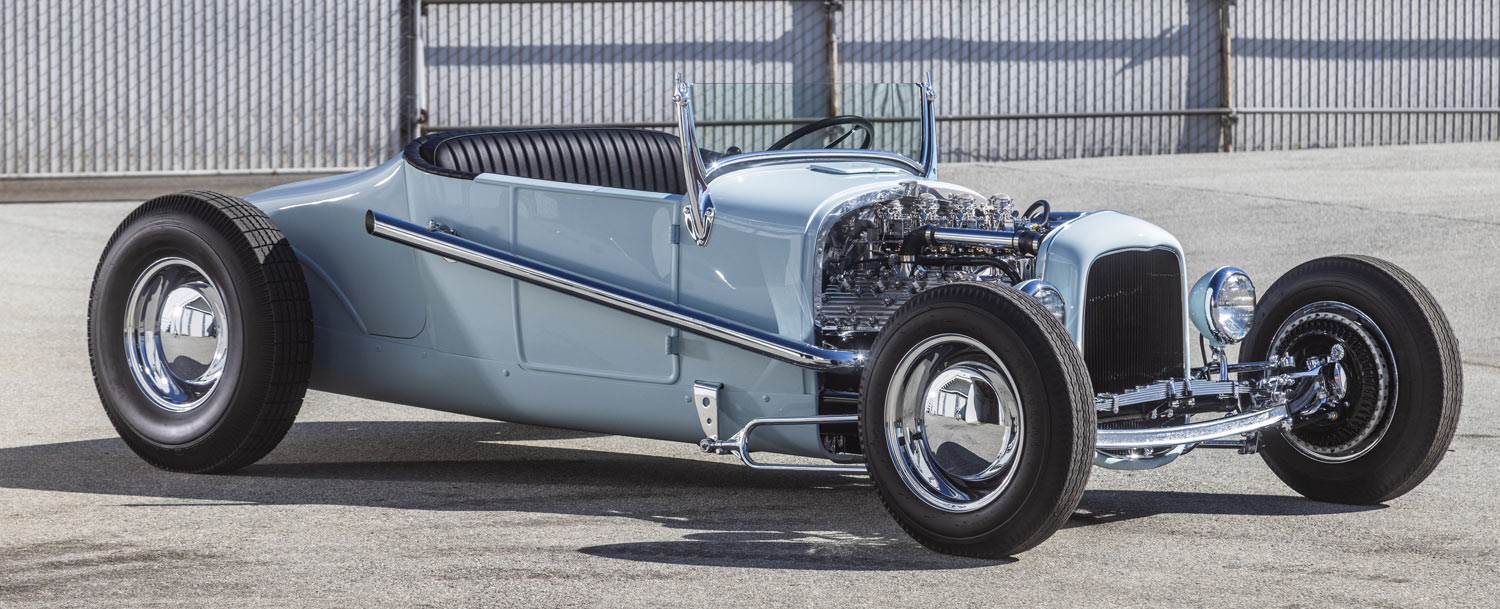
Modern Rodding TECH
InTheGarageMedia.com
 Photography by Cody Walls
Photography by Cody Wallsn our last installment on Doug Melson’s ’47 Dodge, we delved into the coupe’s history and the somewhat bumpy road it’s traveled en route to becoming a nicely restyled hot rod. Without recounting every gory detail, the old Dodge was shuffled between several shops (bearing the brunt of at least one less-than-skilled bodyman along the way) before finally getting back on track at Cody Walls’ Delaware shop, Traditional MetalCraft. Based on a subtle but complete design overhaul by Eric Black at e. Black Design Co., every panel of the coupe is being nipped and tucked to create a profile that’s significantly racier and more aggressive than anything Dodge produced at the time.
After tackling the tail end (the rear fender and decklid work we showed previously), Walls moved forward on the body, revising the roof modifications started by one of the earlier shops and reshaping the front fenders, hood, and grille opening. It’s a monumental amount of work. Dodge business coupes of the ’40s had a greatly abbreviated turret-top roof that some consider a little out of proportion with the rest of the body. When the car landed at Traditional MetalCraft the roof had already been lengthened, but it was lacking in finesse—and in fully welded seams (beneath the body filler it was simply tacked in place). Those issues had to be remedied, along with integrating a more shapely ’49 Dodge grille and one-piece hood as dictated by Black’s design.

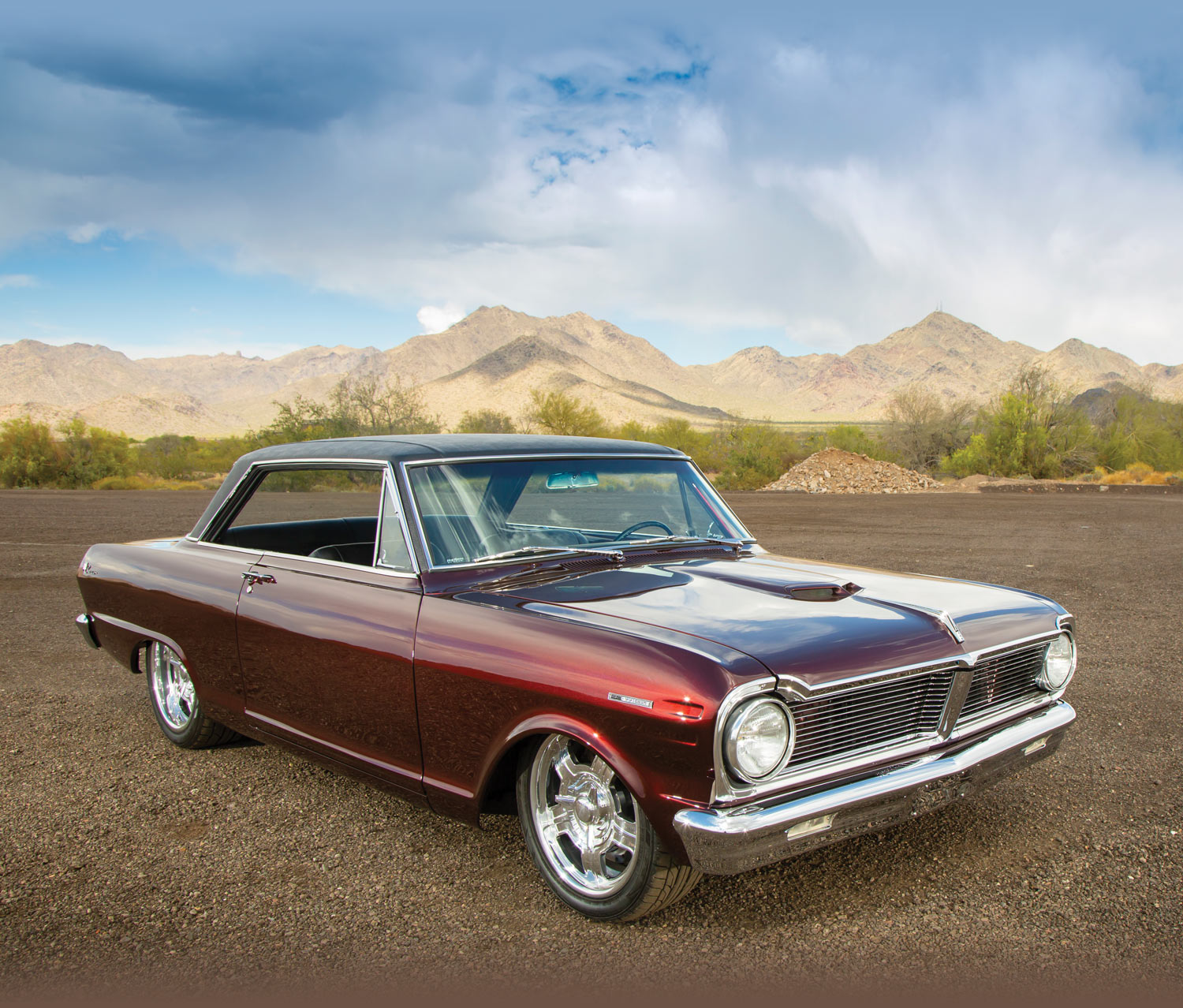
 By Fuelish Media
By Fuelish Mediaave you ever seen an Acadian Canso Sport Deluxe before? If you answered “no” don’t feel too badly, as most folks cannot attest to knowing much about it either, especially anywhere outside of Canada. The Acadian was essentially the Northern version of the Chevy Nova, and back in 1965 when this Acadian model was manufactured, it was only one of just under 400 other Canso Sport Deluxe badged cars to be made that year. That’s a limited number to start with, which is why you may not have heard too much about these cars now that they’re 57 years old and scarcer than ever.
Well, it takes a fanatic to track an Acadian down, but it helps if you just happen to be Canadian citizens like Richard and Penny Hammer who hail from Viking, Alberta. They already have an Acadian—a ’66 wagon that they drive every so often—but they were also able to track down a top-tier ’65 Canso Sport Deluxe Acadian model, which is basically the equivalent of Chevrolet’s Super Sport pedigree, right in their own province. Even though the wagon is fun to putt around in, the Hammers planned to soup up their new project car and deck it out to live up to their wildest street dreams.
1. A complete frame swap can be a big undertaking, but the Scott’s Hotrods ’N Customs chassis takes the guesswork out of it and makes for a smooth transition.
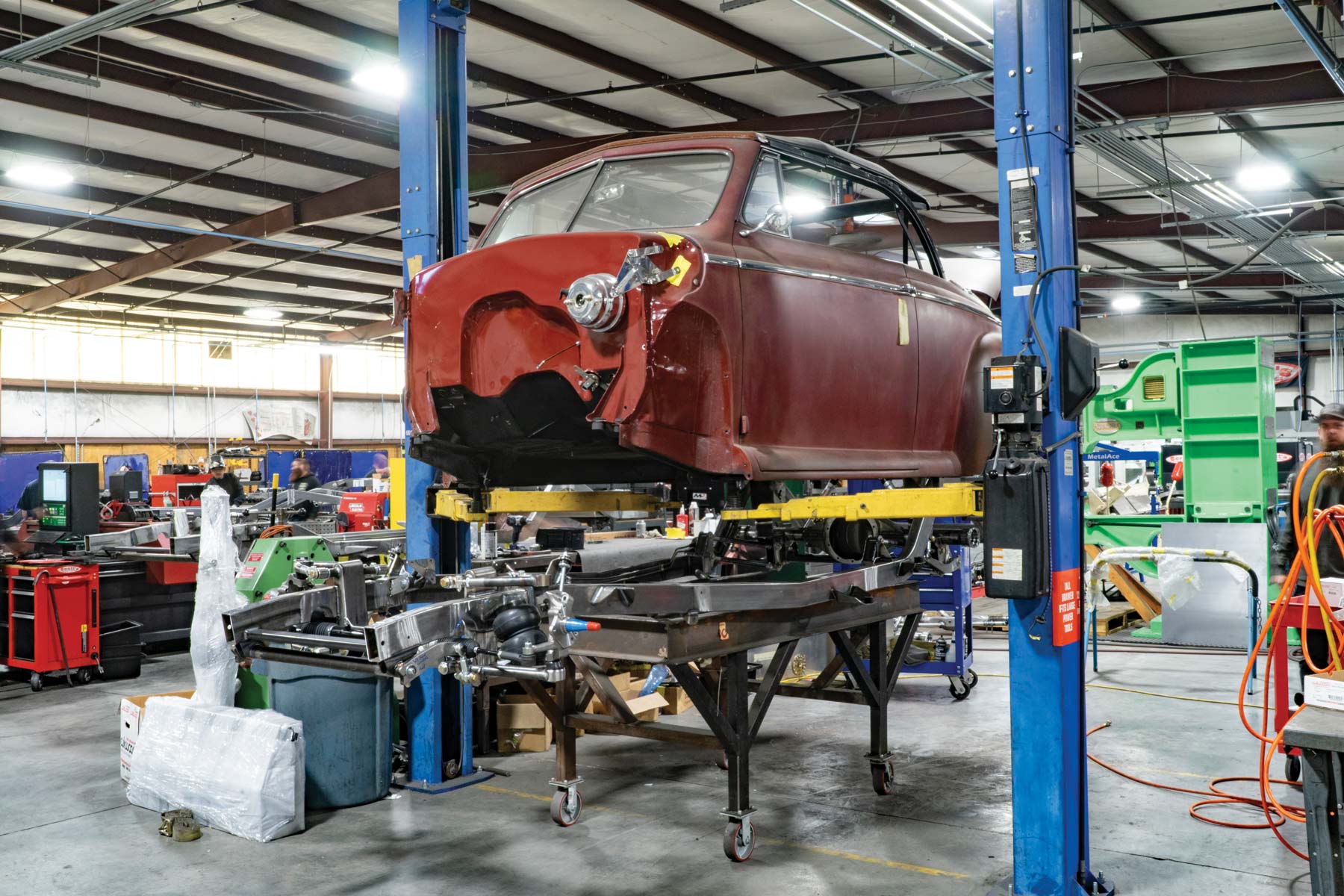
1. A complete frame swap can be a big undertaking, but the Scott’s Hotrods ’N Customs chassis takes the guesswork out of it and makes for a smooth transition.
This ’47 Ford Gets a New Look, Thanks to a Scott’s Hotrods ‘N Customs Chassis
By Tommy Lee Byrd  Photography by Camren Beattie
Photography by Camren Beattie
ot rodding continues to evolve, and it opens the door for many more build options. It’s becoming way more common to order a complete rolling chassis instead of piecemealing a frame and suspension system in your home shop. Back in the day, hot rodders would find a Camaro or Nova front subframe and rearend housing to bring their car into the modern age. While it’s still possible to achieve a smooth ride with the old-school approach, there are obvious advantages to the modern method of using a complete chassis. Scott’s Hotrods ’N Customs, based out of Knoxville, Tennessee, is one of the leading suppliers of custom frame and suspension systems for hot rods, customs, classic trucks, and more.
We recently had the opportunity to follow along with the process of swapping this ’47 Ford convertible onto a new chassis. The original frame had been upgraded with Mustang II front suspension and parallel leaf springs out back. It was a good setup but the stance didn’t provide any “wow” factor. With intentions of sitting the body as low to the ground as possible, the crew at Scott’s Hotrods ’N Customs built a chassis with Ridetech air suspension. The tubular front suspension, rack-and-pinion steering, and four-link rear suspension give this postwar Ford excellent handling capabilities and a smooth ride down the highway.
Although a chassis swap is an extensive process we’re showing you the highlights of the swap, as it went from a dated build to a contemporary showstopper with its patina paintjob, slammed stance, and gray center five-spoke wheels that are stuffed way into the fat fenders. This chassis swap required a little more fabrication than a standard application, so follow along and see the transformation of this ’47 Ford convertible.
Modern Rodding FEATURE
InTheGarageMedia.com
By Tommy Lee Byrd PHOTOGRAPHY by The Author
PHOTOGRAPHY by The Author

Mark & Donna Stewart’s ’65 Dodge Dart is a Hemi-Powered Rocket
By Tommy Lee Byrd PHOTOGRAPHY by The Author
PHOTOGRAPHY by The Author
he idea of stuffing a big engine into a small car isn’t a new concept, but it has certainly been refined through the years. Dodge experimented with Hemi-powered Dodge Darts in 1968 but the freakish cars were never produced with street driving in mind. Although Mark and Donna Stewart didn’t intend on building a drag racing tribute with their ’65 Dodge, the general idea of a Hemi Dart pays homage to those crafty engineers who threw caution to the wind back in the day. Mark’s modern-day approach is a well-sorted machine that combines distinct styling, reliable horsepower, and creature comforts, a far cry from the origins of this economic two-door sedan.
Mark’s journey with this car started in 2016 when he found the clean California survivor and shipped it home to Morristown, Tennessee. The car was bought new at Glendale Dodge and spent its entire life in the dry California climate, which saved the body but damaged a lot of the interior components. Mark loved the body style and immediately knew that he could make something cool out of it, so he put together a build plan and started gathering parts. The build started in 2017 and it was a two-year process to reach the finished product.

 Photography by The Author
Photography by The Author
 Photography by The Author
Photography by The Authort’s a very rare occurrence when such a unique group of hot rods get together like they recently did at the Lyon Air Museum in Santa Ana, California. For hot rodders who understand their history, the name “Santa Ana” should mean something, as the inland Orange County town is where the historic ’50s-era Santa Ana Dragstrip was located—the first organized dragstrip in the country.
The land the dragstrip occupied sat on the southern section of Orange County Airport, renamed John Wayne Airport (SNA) in 1979. Currently, on the west side of the facility is the Lyon Air Museum, named for its founder Major General Michael Lyon, and its contents includes a special collection of World War II airplanes and war machinery. So, it is perhaps fitting that a once-in-a-lifetime gathering of war-era dry lakes and Bonneville Salt Flats belly tank racers would be held on the grounds.
This display of historic belly tanks (made from the empty external fuel tanks that would drop away from the World War II bomber’s wings or fuselage they had been attached to) was curated by Old Crow Speed Shop and its 50-year-old owner Bobby Green. Green’s passion for the ’40s and ’50s exemplifies itself in many ways, from his restoration of vintage bars, bowling alleys, and eateries in the Los Angeles area to his eclectic collection of cars, motorcycles, and race cars—some of which are patina’d survivors while others were recently built to look that way. Plus, he was co-owner of T.R.O.G. (The Race Of Gentlemen) that has produced vintage hot rod racing events on the beaches of New Jersey and California in the past few years. Clearly, he has found his niche.
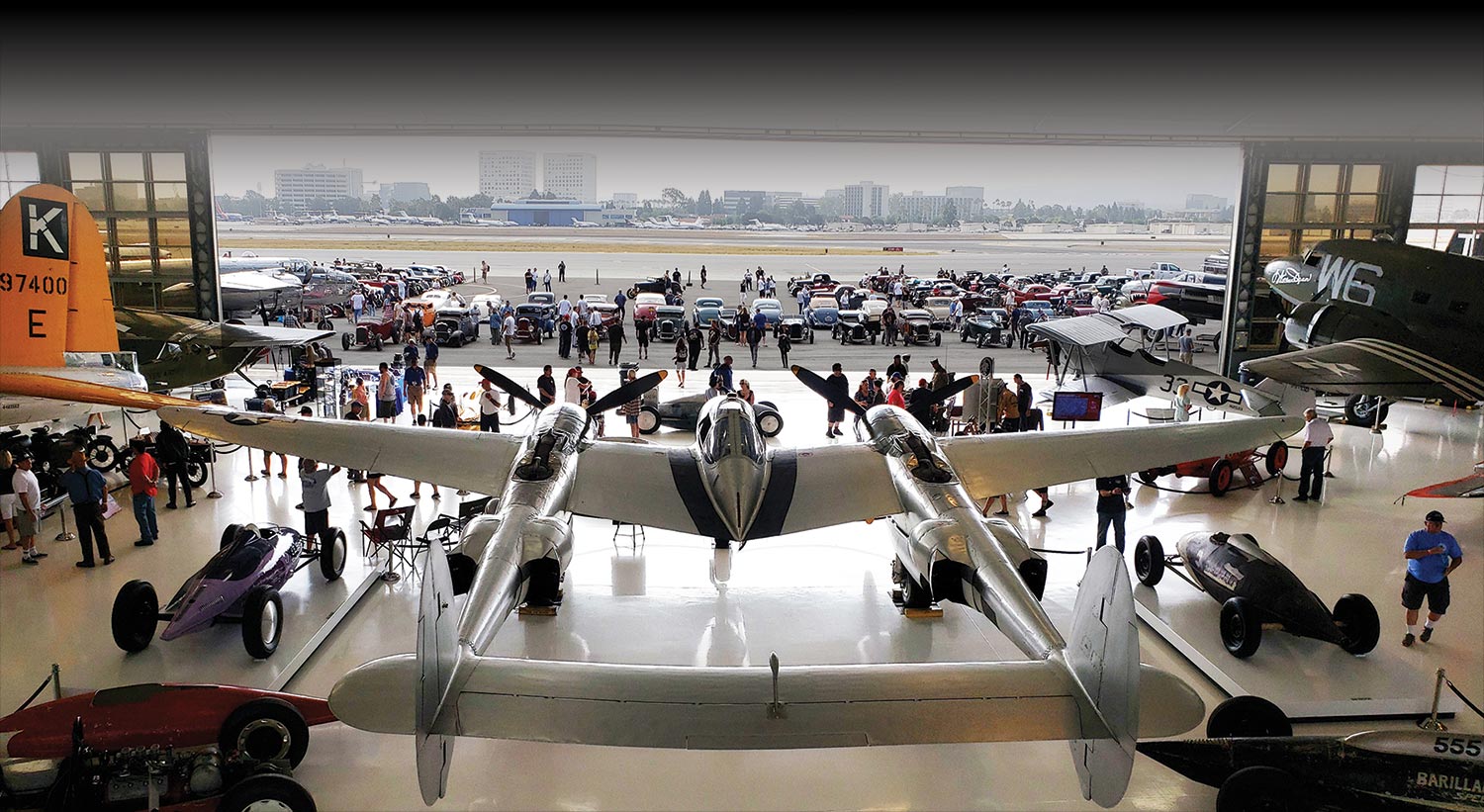
View Index
View Index
View Index
PARTINGSHOT
InTheGarageMedia.com
 By BRIAN BRENNAN
By BRIAN BRENNANhis month’s Parting Shot is looking at “TV Tommy” Ivo’s iconic T-bucket. We are fortunate to have hot rod historian extraordinaire Greg Sharp writing the historic look. It will appear in a rapidly approaching issue of Modern Rodding. To finish off the T-bucket story we have historical photos from Tommy himself.
Now, we are also going to give you a sneak peek from Dave Rocha showing his build. It’s a tribute T-bucket that he is building that is as “correct” to the original as possible. We have been following this build for several years and Rocha is making progress, but it does take time. Let’s take a preview of how Sharp opens the Ivo story…








